Better Sailing


Full Keel Vs Fin Keel On Sailboats
There are many types of keels, but the main two categories are Full and Fin Keels. Traditionally, cruising boats had a full keel, and that made them very stable in the water. This design prevailed for decades until the industry began to realize the emergence of a new type of consumer, the weekend vacationer, or sailor. For this new client, those high benefits were not a priority because rarely, if never to say, would he move away from the coast.
What is the Keel For?
Sailboats have keels to reduce the amount of slippage to leeward (the opposite side of the boat the wind is coming from). In essence, the keel of a sailboat has the function of compensating the action of the wind on the sails, preventing dejection, converting that force into thrust, and making the ship stay on course. As a general rule, the heavier and deeper a keel is, the more stable a boat is.
Full Keel or Fin Keel?
Each keel shape has advantages and disadvantages, you will never have the “perfect” keel for your boat. But, the best keel for you and your boat completely depends on the style of sailing that you are planning on doing.
Full Keel Sailboats
Although full keels are by far the least efficient design, they offer incredible strength and versatility. If we want to explore new waters in which we could run aground, or travel offshore, a complete keel will keep our backs better than any other. One thing is certain though, a full keel will never fall off your boat as a fin keel can.
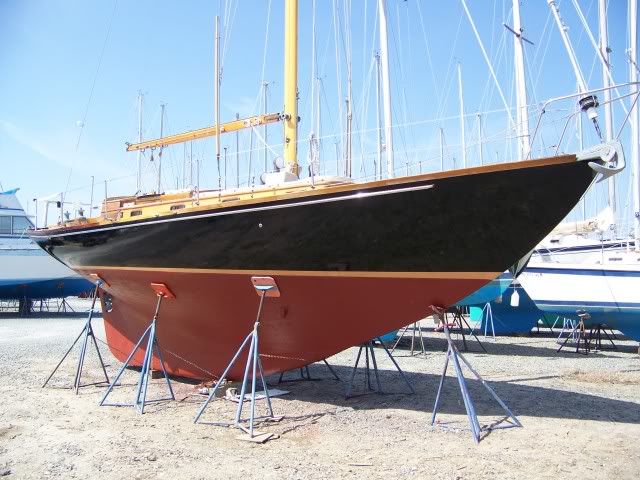
Full Keel Advantages:
- Handles better in tough weather
- Better directional stability
- Maneuver well in downwind conditions
- Better for offshore sailing and ocean passes
- Their movements are softer to be more in tune with the movement of the sea itself.
- Since the full keel runs through the entire hull, the forces exercised on it are transferred to a very large area, so it is often said that they are more robust.
- Thanks to their shape, they respond better to an impact against the bottom than a boat with fin keel, which could be seriously damaged.
- The rudder and propeller are more protected against a possible collision.
- If you stranded with a complete keel sailboat, the forces will be well distributed, the damage will be (in theory) minimal and your biggest concern (although not small) will be to see how to get the boat out of there.
- More stable when sitting still at anchor
Full Keel Disadvantages :
- Slower compared to a fin keel boat
- Handles poorly in winward conditions
- Usually more cramped than fin keeled boats.
- The turning radius is larger, which makes maneuvering in tight spaces difficult, and turning them with a weak wind can be difficult.
- You have to help more with the engine, which translates into increased wear and an increase in fuel consumption.
Fin Keel Sailboats
The fin keel is, by far, the most common type in modern sailboats. A fin keel is a flat, narrow and hydrodynamic piece located under the hull. Unlike the running keel, it is not an integral part of it but is screwed to it. To compensate for the relatively small ballast it provides, the fin keel is usually deeper.

Fin Keel Advantages:
- They are faster than full keel boats
- They maneuver better
- Better for daysailing
- Less resistance to rudder rotation
- Short turning radius
- They usually fit better with tight schedules, such as weekend cruises.
Fin Keel Disadvantages :
- Less robustness and have to be repaired sooner.
- They offer less lateral resistance, which can lead to a strong and sudden heel when a wave or gust of wind hits the boat.
- They do not keep their course as well as a full keel boat and demand more effort and attention at the helm.
- The rudder is more exposed and is more vulnerable to shock and material fatigue. In this sense, an important variation of the rudder is the rudder with skeg. The skeg is a sturdy element that offers support and protection to the rudder.
- If we are stranded with a sailboat with a fin keel, we can find cracks or fissures at the junction of the keel with the hull.
Full Keel Vs Fin Keel – Summary
It is said that fin keels are made to outrun a storm and full keels ara made to weather a storm. So, a full keel sailboat will be slower but more stable during bad weather where a fin keel will be faster but more unstable. A fin keel boat will not have a problem sailing during a storm and you will make it out just fine but you will not be as comfortable or “safe” as in a full keel boat.

Your choice also has to do with the length of the boat you will buy. A very small boat will benefit from a full keel and heavy displacement in terms of seaworthiness and safety. However, a small boat with these characteristics will be a slow one. If speed and time are not your concerns then maybe a full keel is a better match for you.
Like so many things in sailing, there are many tradeoffs in this particular choice, and only you can decide what’s best for you.
So, as you can understand, there not a clear winner in this competition. The answer to this question really does depend on what is the purpose of the boat’s design and your individual needs. Will you be using your boat to cruise, make passages, offshore cruising, offshore racing, coastal racing, etc? You first need to answer these questions and get a boat the checks most items on your “wish list”.
Peter is the editor of Better Sailing. He has sailed for countless hours and has maintained his own boats and sailboats for years. After years of trial and error, he decided to start this website to share the knowledge.
Related Posts

Sailing with Friends: Tie Knots, Navigate the Seas and Create Unforgettable Memories

Atlantic vs Pacific: Which is More Dangerous for Sailing?

The Ultimate Guide to Choosing the Best Fishing Line for Trolling

Lagoon Catamaran Review: Are Lagoon Catamarans Good?
- Buyer's Guide
- Destinations
- Maintenance
- Sailing Info
Hit enter to search or ESC to close.

Voyaging simply in search of adventure
How I became a Full-Keel Convert–Part One
Over the years that I have been sailing, I have logged miles on a number of different craft from an International Sabot up to a steel schooner of about 200 gross tons. Most of my time has been in small, shoal-draft centerboard sailboats up to about 20 feet long; racing keelboat designs like the J-29; and the few cruising sailboats that I have owned over the years. I benefitted from spending time in a broad variety of different sailboats by getting a taste of how different types of boats perform in various conditions. This has given me the opportunity to compare the merits of the different classes of boats.

When I was younger, I craved performance. I wanted nothing more than to just go as fast as possible on the water. My desire for speed eventually led me to become a windsurfing enthusiast, but that is a whole other story. During my high-school and college years I spent a lot of time in International, and then Collegiate 420’s, a two-person dinghy. I thought they were slow and longed to spend time in a more performance-oriented dinghy, even though the 420’s could easily plane and give a good ride when the whitecaps showed up. When I started sailing keelboats, it was mostly the smaller J-boats (24’s and 29’s, mostly), but there was time spent on numerous other designs. I loved the taste of performance multi-hull sailing that I experienced as fill-in crew aboard a Nacra 6.0. The boats that I sailed in my teens and twenties were mostly well-regarded classes that taught me what a fun, responsive boat felt like. They sailed well in a wide variety of conditions with good speed and few bad habits. There is a reason that the one-design dinghies and keelboats that I sailed in were such popular designs–they were good all-round boats.

When I finally had enough money to consider buying my own sailboat I began to consider all aspects of its use. I couldn’t really justify spending a ton of money on a boat that was only good for racing. By this time my sights were fixed on the far horizon rather than outright speed. I wanted to explore the world from the deck of my own sailboat, so I decided to look for a reliable design that could take me anywhere I wanted to go. What I ended up with was a Pearson Vanguard–a 32-foot racer/cruiser designed to the old Cruising Club of America rating rule.
Buying the Vanguard was a huge step for me in many ways. It was the first “big” boat that I had ever owned, it was my first home on the water, and it allowed me my first significant experience with something other than a centerboard or fin keel design.

The Vanguard has a “cutaway” keel with the rudder attached to the trailing edge. Looking at the profile of the boat, there is a lot of area that has been cut away, or hollowed out, making the deep part of the keel start a long way back from the bow. This is done in an effort to reduce the amount of boat in contact with the water, or wetted surface, to make the boat faster when the wind is light. This design achieves its intended goal of reducing wetted surface, but pays the price of introducing a couple of undesirable handling characteristics. The one that I remember most is how the bow would blow downwind when trying to maneuver at low speed. The high bow and long forward overhang on the Vanguard would catch the wind, turning the boat broadside to the wind very quickly. There was no underwater surface to counteract this tendency, and the rudder was way under the boat at the end of the shortened keel. This reduced the rudder’s effectiveness by giving it a shorter lever arm for turning the boat. Fin-keel boats don’t have a surface underwater up forward to stop the bow from blowing away from the wind either, but their rudders are placed farther back on the boat, which gives a stronger turning force and allows better control in low speed situations (especially in reverse) compared to the cutaway-keel boat.
On the positive side, I really came to appreciate some of the good qualities of the cutaway keel on the Vanguard. The keel on the Vanguard is molded with the boat as one unit. The shape transitions smoothly from the hull to the keel, which prevents the front part of the keel from loading up with seaweed when sailing–a real plus when there is a lot of weed in the water! The shape of the keel also helps reduce shock loads in some grounding situations, such as when running onto a sloped sandbar. Not having a long fin keel sticking out of the boat also reduces structural loads when running aground–in particular eliminating the point-loading at the trailing edge of the fin keel that can cause it to push up into the hull and cause a lot of damage. Having the rudder attached to the trailing edge of the keel helps prevent seaweed, lobster and crab pot floats, and other fishing gear from getting trapped on the rudder. The keel shields the propeller as well. I never once had a pot or fishing line caught on my Vanguard, though I often sailed in waters thick with fishing gear. Besides making my life easier, fishermen don’t exactly appreciate having yachtsmen cut their floats from props and rudders, either…
A cutaway-keel boat tracks better than a fin-keel boat. The Vanguard didn’t need constant, minute attention to the helm. I could count on her to track well if I needed to adjust a sheet or otherwise divert my attention for a moment. This is a great characteristic to have in a cruising boat. I could balance the boat and let her sail herself for a while if I needed to go forward to attend something or use the head. I have had some luck locking the helm down on a fin-keel boat to keep them going straight for a short while, but this technique is not as effective as when used on a cutaway-keel boat or a full-keel boat.
Overall, the cutaway-keel Vanguard was a surprisingly enjoyable boat. I didn’t feel too handicapped by the speed penalty that I paid for the extra wetted surface of the cutaway full keel. She still had good speed even in light airs, and offered a more comfortable motion than most fin-keel boats that I have been on. The comfort was due in part to her keel design, but also because the Vanguard was heavier, deeper, lower in freeboard, and had a more moderate beam than the other cruising sailboats that I had experienced. I don’t want to contribute to the myth that there aren’t any comfortable fin-keel boats out there! Those boats do exist. They are just more difficult to find (it’s not fashionable to build relatively narrow boats with easy bilge sections these days) and still won’t offer the other advantages of a keel with an attached rudder, like weed-shedding, or a rudder that doesn’t rely solely on the stock for attachment to the boat…

When I went searching for a small, versatile cruiser a few years ago I settled on the Contessa 26. This design is based on an older design than the Vanguard, and has a much longer cutaway keel. It is getting pretty close to a full keel, but still has a concave shape to the forward end. The longer keel eliminated some of the poor handling characteristics of the more dramatically cut-away keel on the Vanguard. Having a longer keel gave the rudder a longer lever arm and actually improved steering, even though there was a much longer keel to drag through tight turns. She tracked like a dream and worked very well with her self-steering gear in all conditions. I loved sailing this boat. The Contessa 26 design was close enough to a proper, old-school full-keel boat that it seemed only a small leap to go all the way to a full-keel the next time that I went boat shopping…
Continue reading Part Two here.
Share this:
- Click to email this to a friend (Opens in new window)
- Click to print (Opens in new window)
- Click to share on Facebook (Opens in new window)
- Click to share on Twitter (Opens in new window)
- Click to share on Tumblr (Opens in new window)
- Click to share on Pinterest (Opens in new window)
- Click to share on WhatsApp (Opens in new window)
- Click to share on Skype (Opens in new window)
- Click to share on LinkedIn (Opens in new window)
- Click to share on Reddit (Opens in new window)
4 thoughts on “ How I became a Full-Keel Convert–Part One ”
Oh wow Such a useful article! I own more than 15 boats but in the middle of lockdown I became interested in building one. So you article is really helpful and inspiring for a beginner like me. I own a web directory about boating as well. Would you mind if I add your article to my directory?
You’re absolutely welcome to link to this article, Kris! I am happy to read that you enjoyed it. Thanks for the positive feedback.
Great article! Maybe you can help me with something about locating and deciding on the boat I want. Any suggestions about what years or manufacturers or actual sailboats that have full keel rudder systems? It’s not something that is openly stated in most of the classifieds of used sailboats unless there is a photo included. I’m thinking about a 39′-50′ sailboat.
Thanks John
Hi John- There are a huge number of full-keel boats out there. I would suggest that if you find a boat that seems interesting to you as far as size, condition, and price go, that you then check out the specs available on and do an image search looking for a line drawing or a picture of that type of boat out of the water. I prefer to look at line drawings myself, but they are not always easy to find on the web, so the pictures are helpful there.
I am not as familiar with boats in the size rang that you are looking at, but you will probably find that there are fewer full-keel boats in that size range. Yachts larger than about 45 feet have only become common in large numbers relatively recently, and the true full-keel boats are mostly older designs. There are some great designs out there in your size range, though. “Little Ranger” by William Atkin comes to mind on the traditional end of things. See for drawings. There was a fiberglass one for sale a while back in Massachusetts… The Westsail 42 and 43 appear to be well-proportioned, more modern production boats that would be easier to find.
Looking in your size range, especially if you would consider modern-looking boats, I would not ignore boats that have a rudder hung on a heavily-built skeg, as that will greatly expand the number of designs available for consideration. There are some modern designs that have reputations for strong rudders, such as the Amel “Maramu”, the Pacific Seacraft 44, or the Valiant 42, or 47. –Barry
Leave a Reply Cancel reply
Your email address will not be published. Required fields are marked *
Notify me of follow-up comments by email.
Notify me of new posts by email.
This site uses Akismet to reduce spam. Learn how your comment data is processed .
- New Sailboats
- Sailboats 21-30ft
- Sailboats 31-35ft
- Sailboats 36-40ft
- Sailboats Over 40ft
- Sailboats Under 21feet
- used_sailboats
- Apps and Computer Programs
- Communications
- Fishfinders
- Handheld Electronics
- Plotters MFDS Rradar
- Wind, Speed & Depth Instruments
- Anchoring Mooring
- Running Rigging
- Sails Canvas
- Standing Rigging
- Diesel Engines
- Off Grid Energy
- Cleaning Waxing
- DIY Projects
- Repair, Tools & Materials
- Spare Parts
- Tools & Gadgets
- Cabin Comfort
- Ventilation
- Footwear Apparel
- Foul Weather Gear
- Mailport & PS Advisor
- Inside Practical Sailor Blog
- Activate My Web Access
- Reset Password
- Customer Service

- Free Newsletter

Mason 33 Used Boat Review

Beneteau 311, Catalina 310 and Hunter 326 Used Boat Comparison

Maine Cat 41 Used Boat Review

Cheoy Lee Clipper 36 & 42 Used Boat Review

Tips From A First “Sail” on the ICW

Tillerpilot Tips and Safety Cautions

Best Crimpers and Strippers for Fixing Marine Electrical Connectors

Thinking Through a Solar Power Installation

Stopping Mainsheet Twist

Working with High-Tech Ropes

Getting a Clue for the Blown-Out Clew

Monel Seizing Wire is Worth the Extra Cost

Fuel Lift Pump: Easy DIY Diesel Fuel System Diagnostic and Repair

Ensuring Safe Shorepower

Sinking? Check Your Stuffing Box

The Rain Catcher’s Guide

Boat Maintenance for the Technically Illiterate: Part 1

Whats the Best Way to Restore Clear Plastic Windows?

Mastering Precision Drilling: How to Use Drill Guides

Giving Bugs the Big Goodbye

Galley Gadgets for the Cruising Sailor

Those Extras you Don’t Need But Love to Have

UV Clothing: Is It Worth the Hype?

Preparing Yourself for Solo Sailing

How to Select Crew for a Passage or Delivery

Preparing A Boat to Sail Solo

On Watch: This 60-Year-Old Hinckley Pilot 35 is Also a Working…

On Watch: America’s Cup

On Watch: All Eyes on Europe Sail Racing

Dear Readers

Chafe Protection for Dock Lines
- Sailboat Reviews
A Look at Sailboat Design: Fin Keels vs. Full Keels
Details like keel design count when considering cruising sailboats..

Photos by Ralph Naranjo
When a keel tears away from a sailboats hull, it makes the loss of a rig or rudder seem like a minor inconvenience. History shows that its an uncommon occurrence, but because we now annually hear of such incidents, weve decided to take a closer look at keels and see what keeps the ballast where it belongs.
The International Sailing Federation (ISAF) Offshore Special Regulations devotes pages to helping sailors prevent and respond to a crew overboard incident. There is nothing about how to handle the loss of a keel or ballast bulb. Some might say this is because such occurrences are so infrequent, while others note that, if youre still upright once the ballast breaks off theres not much you can do other than blow the sheets, douse the sails as quickly as possible and attempt to stop any leaks.
When solo sailor Mike Plants Open 60 Coyote lost her lead bulb in 1992, Mike was lost at sea. Other adventure-sailors have survived near instantaneous capsize precipitated by keel loss. In 2003, round-the-world racer Tim Kent and his crew capsized when Everest Horizontal lost its ballast on the way back from Bermuda. US Sailing Safety at Sea Committee Chairman Chuck Hawley was aboard the racing sloop Charlie, on the way back from Hawaii, when a loud groaning sound led to a deep heel as the lead peeled away from the keel bolts and ballast headed straight to the bottom. This encounter at least had a happy ending thanks to the crews quick actions to douse sail. Apparently the keel had been cast with too little antimony (an additive that causes lead to become a harder alloy). The point here is that keeping the keel attached is as important as keeping the crew safely on board. And for the offshore monohull sailor, preventing a keel loss, like preventing crew overboard, requires some informed forethought.
A ballast keel on a sailboat is a classic example of potential energy poised in a balancing act. The buoyancy of the hull itself offsets the effect of thousands of pounds of lead or iron. At rest, gravitys attraction for the dense material strains against the buoyancy of the hull, and the adjacent garboard region is continuously in tension. Few sailors spend much time contemplating how keel bolts corrode and what cycle-loading does to the resin matrix comprising the garboard region just above the ballast. What is apparent, is that the attachment material, whether it be wood, metal or fiber reinforced plastic (FRP), must be able to support a mass of metal weighing as much as a small truck-and do so day in and day out for decades.
Underway, every tack causes the rig and sailplan to try to lever this ballast package free from the hull. And when the helmsman starts daydreaming about lobster for dinner and wanders off course onto a granite ledge Down East, the keel designed to handle sailing loads takes it on the chin. Its easy to see why experienced designers and builders lose sleep over their decisions about keel shape, structure, and what kind of safety factor should be built into the structure.
Its surprising to discover that with better materials and computer-aided design, we still hear about incidents such as the Rambler capsize in the 2011 Fastnet Race (PS, May 2012). Just as significant is a spate of smaller race boat keel-ectomies that have caused ISAF to send out a cautionary note to sailors around the world, and introduce new structural standards for race boats. Keeping the ballast attached to the boat involves an awareness of a chain-like set of failure points. And one of the most difficult decisions each designer must make is how to marry foil efficiency with a structural safety margin that covers the boats intended usage and the unintended use of the keel as a depth sounding device.
For decades, engineers and naval architects have had to contend with some racing sailors Icarus-like quest-a trend that prioritizes shedding weight and making the keel foil a long, thin appendage with a high-aspect ratio. Though not quite a flight toward the sun with wings made of wax and feathers, some race-boat scan’tlings walk a fine line between lightweight and structural failure. The challenge lies in attaching a lead bulb on a high-tensile steel foil to a lightweight, high-modulus, FRP hull. Interconnecting the dense metallic ballast to the lower-density foam/fiberglass hull structure is a true engineering puzzle. Part of the challenge lies in the dissipation of point loads (confined to a relatively small area) and how to handle the resulting stress risers. A stress riser is the point at which theres an abrupt change in a materials flexibility, such as where a stiff, fin keel meets the more elastic hull bottom. In FRP composites like those found in a balsa-cored hull, stress risers are a likely place for delamination to occur. Over time, these can result in the failure of the FRP composite.
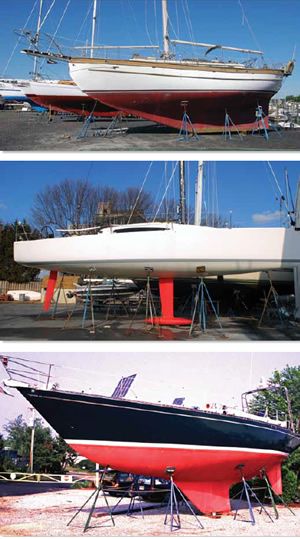
The see-saw effect of the keel counteracting a vessels righting moment is a mathematically predictable energy transfer. Even the effect of groundings such as those that turn hull speed into a dead stop can be quantified. But its the cumulative effect of fatigue (localized structural damage caused by cyclical loading) and corrosion that are harder to pin down.
The term allision refers to hitting a fixed object such as a granite ledge or coral reef. Naval architects analyze the energy transfer and evaluate the stress and strain characteristics that occur. The recognition that the keel-to-hull connection must endure even more punishment than is doled out in heavy-weather sailing episodes is at the heart of how structural specs are devised.
Designers also must consider the jack-hammer-like pounding of a keel on a reef in surf, and realize that there are limits to the abuse a keel and hull can endure. With this in mind, its reasonable to assume that sailboat keels should be built to handle sailing induced loads for decades. It is the extra safety factor built into the boat that defines what happens when the sandbar is a rock pile.
What is harder to anticipate are the unusual encounters that can inflict serious damage to the keel connection. Take, for example, what happens when a sailboats deep fin keel is wedged in a rocky cleft and a good Samaritan with a big powerboat attempts to pivot the sailboat using a line attached to the bow. The distance from the keels vertical centerline to the stem may be 20 feet or more, and with a couple of thousand pounds of bollard pull, the 20-foot lever arm creates a rotary force that can spike to 40,000 foot-pounds or more. This level of torque goes well beyond what most designers and builders model as sailing loads, and its likely to seriously damage the boat.
In plain low-tech talk, extreme fin keels provide a valuable performance edge, but they come with their own set of downsides that every owner needs to be aware of. In essence, the more radical the keel shape, the better the crew must navigate.
A couple of decades ago, PS Technical Editor Ralph Naranjo ran a boatyard and had a client who liked to cut the corners during Block Island Race Week. His first spinnaker reach into a granite boulder stopped the boat and shoved the companionway ladder upward six inches. This underscored how an allision that causes the keel to stop abruptly transfers a shock wave through the entire hull. The resulting compression cracked several transverse members in the New York 40 and damaged the core in the canoe body near the garboard.
The FRP repairs had to be tapered and all delamination problems resolved. The moderate-aspect-ratio lead fin keel absorbed a good deal of the blunt trauma. Judging from the cannonball-size dent on the leading edge of the lead keel, it was clear that the impact was significant. The dent offered grim proof of the advantage of having soft lead instead of steel as keel ballast. New floor frames were added, the broken transverse members were replaced, and the boat was off and sailing.
The next season, the boat had another Block Island encounter, and only because the Petersen-designed New York 40 was a pretty ruggedly built boat was a second repair even considered. This time, an equally violent keel-to-hull trauma came from an on-the-wind encounter with a different rock. The extent of the delamination was greater than it had been in the first go round, and more extensive core removal and repair was required. The keel was dropped in order to check the bolts and the garboard. With the bilge fully opened for the FRP repair work, the repair crew made a pattern of the canoe body dead rise and fore and aft contour. As the glass work was being completed, they fabricated a stainless-steel grid that would spread keel loads fore and aft as well as athwartship. The new grid reinforced the keel attachment and returned the sloop to the race course.
Afterward, Naranjo and the owner discussed the details of the repair, including the possibility of hidden, widespread damage from the two groundings. These included the dynamic loads imposed upon the chainplates and rigging, the likelihood of hidden resin-cracking, and potential for more delamination and core shear linked to the torque induced by the accident. In short, any serious allision causes overt and hard-to-detect damage far from the actual impact zone, and these can lead to more problems down the road. When buying a used boat, look for a good pedigree, but also look for signs of previous blunt-force trauma. A good surveyor will be skilled in such structural forensics, and he or she will do more than comment on the gelcoat shine.
In the early days of wooden ships and iron men, a lack of dense metal ballast put less point-loading in the garboard region of the hull. Bilges free of cargo were filled with rocks or tighter-fitting granite blocks cut for more compact stacking. The principal of ballasting a vessel was to lower her center of gravity (CG) and create both an increase in the righting arm and a greater righting moment to offset the heeling moment created by the rig and sail plan. The keel also helped lessen leeway and would evolve into an appendage that added lift.
Movable ballast had a few downsides, not the least of which was its propensity to move in the wrong direction at the very worst moment. Even small boat sailors have found out what can happen to unsecured pigs of lead ballast when the boat heels far enough over for gravity to overcome friction. Whether stones, lead, movable water ballast, or a can’ting keel are used to augment the boats righting moment, a sailor must anticipate the worst-case scenario. This is when the weight ends up on the leeward side of the boat and a bad situation can turn into a real catastrophe. Fixing or locking ballast in place, controlling the volume of water put in ballast tanks, and limiting the can’ting keels range are sensible compromises.

Internal ballast, the ballast inside a keel envelope thats contiguous with the hull, is still seen in many new boats. Island Packet is an example of a builder has stuck with this traditional approach of securing ballast without using keel bolts. Its a sensible design for shoal-draft cruisers, and the upsides are numerous. These high-volume, long-range cruisers arent encumbered by the demands prioritized by light displacement, performance-oriented sailors. Instead, Island Packets combine a rugged laminate and a long-footed, shallow-draft keel. This may not place the lead or iron ballast as deep as the tip of a fin keel, but it does keep the all-important CG low enough to deliver a powerful righting moment along with shoal draft.
In order to deliver the high angle of vanishing stability (AVS) also known as limit of positive stability (LPS), designer Bob Johnson puts what amounts to an internal bulb in the very lowest point in the boat. This long slug of iron or lead (depending on the model) is then covered by Portland cement, locking it in the Island Packets monocoque structure. The result is a contiguous FRP structure spreading keel loads efficiently over a considerable amount of hull skin. Keel bolts and the infamous garboard seam are completely eliminated. This approach to sailboat keel design dates back to the Rhodes Bounty II and other prototypes in the production world of sailboats. Now over 50 years old, many of these boats continue to have a tenacious grasp on the lead or iron that they hold.
Encapsulated iron ballast is much less desirable than encapsulated lead, and its sad to see builders skimp on this. Iron, or even worse steel, has been used in many Far Eastern encapsulated keels. It works as long as water and the resulting oxidation havent caused expansion and cracking of the seal. Lead is also denser than ferrous metal, and therefore, the same amount of ballast will have a smaller volume and create less drag.
Encapsulated ballast starts to be less appealing as keels become more fin-like and high-aspect ratio. The reason for this is that the geometry of the support changes, focusing more load on less area of the hull. As hull shapes evolved into canoe underbodies with hard turns in the bilge, and fin-like keels became thinner, deeper, and with shorter chord measurements (thickness), the concept of encapsulated keel became impractical. The Cal 40, Ericson 39, Pearson 365, and a long list of similar genre boats signified the end of an era when performance racer/cruisers would be built with encapsulated ballast.

External Ballast
Performance-oriented sailors and race-boat designers quickly latched on to hull shapes marked by deep-draft, foil-shaped, high-aspect ratio fin keels. From the late 60s to whats currently glowing on CAD screens in designer offices around the world, keels have grown deeper and shorter in chord length, and bulb or anvil-like tips have grown more and more common.
The design development was sound, lift was enhanced, and deeper-not longer-became the answer to getting to windward faster. The challenge was not only in designing an efficient shape, it lay in creating an attachment means that minimized foil flex and twist, retained the low drag coefficient, and still had the ability to withstand an occasional, albeit modest, grounding.
During this same period, marine surveyors and boatyard techs began to see moderate groundings result in major structural problems. The classic example was the allision that produced a moderate dent in the lead at the leading edge of the keel tip. In many cases, further inspection revealed cracks radiating outward from a knot meter or depth sounder mistakenly placed just ahead of the keel. An even closer look often revealed grid damage or a cracked bulkhead just aft of the last keel bolt. Like the New York 40 mentioned earlier, this was a result of a shock wave radiating through the hull structure. As we learned in Mrs. McCrearys science class, Bodies in motion tend to stay in motion, unless acted on by an equal and opposite force. Fin keel sailboats encountering abrupt energy transfers,tend to endure more damage than their long-keel counterparts.
A forensic look at the Achilles heel of external ballast highlights a few pitfalls. First the good news: Lead absorbs impact well, consuming much of the imparted energy through deformation. However, the translation of the remaining energy from the metal keel foil and keelbolts into an FRP hull is where we often find stress risers, and point loading linked to material and hull shape changes. The near right-angle interface between a modern sailboats canoe body and its deep fin keel is a classic load-path hotspot. In the old days, fiberglass techs spoke of oil-canning or the dimpling of a large section of the garboard as tacks were swapped.
Today Naval Architects use Finite Element Analysis (FEA) to better engineer hull structure. Colorized graphics pinpoint load concentration, glowing bright red in the region where the keel joins the hull, the epicenter of the oil-canning. A common solution to coping with this high-load focal point, is to eliminate core in the region and to gradually increase the unit schedule (layers of FRP), or to add an internal FRP grid. Maximum thickness of a keel stub is located where the keelbolts penetrate the stub. In this region, the solid glass thickness is often equal to the dimension of the keel bolt diameter or even greater.
Laminate thickness at the keel bolts is only part of the equation. Just as important is how the transition to the general hull laminate transpires. A bullet-proof keel stub that immediately transitions into a core hull comprising two units of laminate on each side of the panel creates whats equivalent to a tear-on-the-dotted-line weakness. Transitions that involve sharp angles and marked differences in panel strength require a well-reinforced taper that spreads loads gradually rather than abruptly.
Occasionally, we see massive metal frameworks used in the bilge as support for keel bolts; these structures need to be carefully engineered to not create the same hard spot fracture points. When carefully tapered in order to gradually introduce more flex, the problem is abated, as it was in the repair of the New York 40 mentioned earlier. The stainless-steel grid built to support the keel loads incorporated a gradual decrease in stiffness to the framework. The keel was carefully mated to the underside of this grid to ensure full contact (See Keel Bolt Repair Options, online). As a result, the crew relieved the hard spots at the end points and made the transition to the more flexible FRP hull less dramatic.
For cruisers, the take-away lesson is that extra reinforcement, a long garboard keel-to-hull interface, and internal transverse and longitudinal reinforcement really do pay off. Keep in mind that the extra weight this entails is all below the center of gravity and contributes to the secondary righting moment as well as keeping the water out.
This is a big departure from the way many modern production boats are built. They carry a skimpy ballast ratio of 30 percent or less, have less structure to support the keel and are not designed to handle unintended cruising consequences. There are exceptions, and its worth looking at the keel design and structure of the Navy 44 Mark II and the USCG Leadership 44 (see PS, August 2012). These boats utilize external ballast and are examples of rugged keel attachment. They have a relatively long keel-to-stub garboard junction, the laminate scan’tling meets American Bureau of Shipping recommendations, and both utilize an overabundance of 316 stainless-steel keel bolts and an FRP grid to keep the keel where it belongs.
There are many reasons why were seeing more keel problems today. On one hand, light, fast, race-boat design pushes the envelope, and thats probably OK. But when mainstream racer/cruisers start to suffer from lead loss, too much of one good thing (high-aspect ratio) and too little of another good thing (reinforcement) can begin creeping into design and construction.

RELATED ARTICLES MORE FROM AUTHOR
Leave a reply cancel reply.
Log in to leave a comment
Latest Videos

The Perfect Family Sailboat! Hunter 27-2 – Boat Review

Pettit EZ-Poxy – How to Paint a Boat

The Boat From True Spirit – Sparkman & Stephens

Top 5 Boat Hacks – Boat Maintenance Tips and Tricks
Latest sailboat review.

- Privacy Policy
- Do Not Sell My Personal Information
- Online Account Activation
- Privacy Manager

Sailboat Keel Types: A Complete Guide

Last Updated by
Daniel Wade
June 15, 2022
A keel is a very important part of a sailboat, crucial to its stability and ability to sail upwind. This article will discuss the fundamentals of all keels down to the details of the best keel for your boat. We will answer questions including what it does, what it's made of, and even some problems that a keel can cause. By the end of this article, you will be an expert on all things keels!
Table of contents
What Is a Keel?
A keel is the robust underwater centerline of a boat, and often extends into a long, hydrodynamically shaped blade.. It can vary in size and shape depending on the make and model of the boat. But, generally, it will look very much like a fin. If you imagine the fin on the underside of a surfboard you will have a pretty good idea of what it looks like under the boat.
It is crucial to helping with steering and control. The word keel itself comes from Norse and Dutch roots. The word simply means a structural component of the boat. You may have heard the term keel-haul, where pirates would drag someone underneath the boat across its keel. This is pretty barbaric, but it shows just how long a keel has been an important part of the boat. From Vikings to pirates to modern sailboats it has always remained an important part of a sailboat.
What is a keel made of?
A keel will typically be made of whatever the rest of the hull is made of. If the boat is wooden, it will most likely have a wooden keel. If the boat is metal, the keel will be metal, and so on. Sometimes, particularly on fiberglass boats, the core of a keel will be reinforced with lead or a similar ballast while the outside is covered with fiberglass.
The keel needs to be strong enough to withstand a lot of pressure and strain. Traditionally Viking sailing boats would have a wooden keel with some metal plating on it. Casting metal was tedious so putting it on your boat was seen as a waste. Traditional wooden sailing boats, like you would imagine pirates sailing, would also have a wooden keel. It would be made from thick hardwood like oak and could also be metal plated.
Since it is used to control the direction it must brunt the force of the change of direction. If you imagine a boat turning sharply, there will be a lot of pressure on the side that is on the outside of the turn. The hull of your boat will stand up to this pressure easily, as it is very large and very strong. The keel must be strong enough to withstand this too. The keel also can drag on the ocean floor or the boat ramp as the boat is lowered into the water. For this reason, it needs to be strong enough to hold up to the weight and pressure of the boat too. If it were made of plastic it would break every time you brought the boat in and out of the water.
What does a keel do?
The keel is there primarily for stability and guidance. The keel provides all sorts of benefits to the boat. It improves the righting moment and controls the boat’s sideways movement. The keel will also typically hold the boat’s ballast. The ballast keeps the boat weighed down and helps prevent capsizing. The ballast is typically made of lead, sand, or water.
Keels can be fixed or moveable. Some keels can be removed completely or may just retract slightly so they aren’t damaged when the boat enters or exits the water. When a boat leans to one side, because it is turning or there is strong wind/waves, the keel provides the righting moment that keeps the boat from flipping. On larger boats, it is designed to be so heavy that ig will be able to recover a boat from almost any angle of heel. Without a keel, your boat may tip too far or roll completely. On bigger ships, this can be disastrous. In its ability to prevent this alone, the keel is one of the most important parts of the ship.
Does my sailboat need a keel?
Yes, you do need a keel. Pretty much all sailboats have a keel, with exceptions for multi-hulled and/or smaller boats.
In the case of catamarans, the very design principles that lead to the dual-hull design render the keel obsolete. The stability introduced by the outrigged, dual-hulls replaces the necessary righting moment from the keel. Because almost all the structure of a catamaran is between the two hulls, unlike a monohull which builds out from and around its centerline, there is not a lot of weight pressing out to flip the boat. Related to this, since most catamarans have the length of their hulls pressing into the water, the steering force normally placed on a keel is distributed across the length of the two hulls, which additionally will carry their own ballast.
On smaller dinghies, a small swinging centerboard or daggerboard will suffice to play the role of a keel. The centerboards can be big enough to keep the boat flowing nicely through the water without the need for a large keel. Additionally, it is not a disaster for a small sailing or racing dinghy to capsize, as they are designed to do so and recover rather easily, so the ballast from the keel is also not terribly necessary.
If you have a motorboat you wouldn’t need a keel, unless it is a very large container ship or military vessel. The reason being that they are outboard propelled. The leg provides enough stability on its own. This is only the case with full plane powerboats. Displacement (even semi-displacement) craft will still need a keel of sorts for stability purposes.
What are some downsides to having a longer keel?
If you have a long keel that doesn’t retract or detach, you may have some problems coming in or out of the water. The keel extends far below the bottom of the boat, so if you are bringing your boat up or down a boat ramp you may find that it scrapes on the bottom. If you are not careful, you may damage the keel rather badly.
Since the keel is made of metal, wood, or fiberglass it can bear the brunt of the weight quite well. If you are putting your boat in the water and cannot retract the keel, it is a good idea to go as far into the water as possible before taking your boat off its trailer. The deeper you are in the water when the boat is released the better.
Are there any nautical traditions about the keel of the boat?
The keel is interestingly very important when it comes to boat or shipbuilding.
Traditionally, the keel is one of the first parts of the ship to be made, as the rest of the ship must sometimes be built around it. This tradition is called “laying the keel,” and is a momentous occasion. It is essentially the boat’s birthday. The boat’s age is dated from this moment, and there is also typically a celebration of sorts. This goes back to the days of seafaring exploration. The only day more important in a boat’s life is the day it is finally launched.
Can other types of boats have keels?
Yes! Many other types of boats have keels, not just sailboats. A good example would be a big shipping trawler. These trawlers are very large and need all the help they can get to stay balanced. Because of this, they often have what’s called a bar keel. This is a large rectangular piece of metal that runs along the bottom of the boat’s hull. It is very thick and heavy. The idea is that it gives the boat some more directional control when steering.
Furthermore, it helps keep the trawler balanced when out at sea in rough conditions. The extra weight keeps the boat’s center of gravity as low as possible. This makes tipping the boat almost impossible. It does slow it down a bit, but that is a small price to pay for increased safety.
Huge cargo ships also have a keel, though it is different from a bar. Their keel is known as a plate keel. It is essentially another layer of the boat under the hull. Its only purpose is added weight and protection. A plate keel runs along the centreline of the bottom plate of the ship so the weight is all concentrated in the lowest place possible. This kind of keel works similarly to how the spine of a person does. It keeps your back strong and as straight as possible.
How important is it to keep my keel clean?
It is very important to keep your keel clean, just as it is important to keep the rest of your hull clean.
For any boat kept on the water rather than hauled out every day, there is always the need to clean the hulls and keels of any barnacles and other sea growth. Barnacles not only affect your performance, but can, in the long run, greatly increase your maintenance costs if not regularly addressed.
To do so, you have to do what is known as scraping. Scraping is the process of physically scraping off all the barnacles and other sea life that has attached itself to the underside of your boat. Many marinas offer this service, but you can do it on your own with a basic plastic paint scraper and a wetsuit. When you do this, it is key to get all the way down to the bottom of the keel and all across the hull. If you don’t scrape it off, it can start to erode your boat away over time. It can also slow you down.The barnacles and other marine life create a very rough bottom. This creates more friction and will reduce your speed more and more the worse it gets.
It is important to check with your port authority before you start scraping. Scraping is not allowed in some places as you may introduce invasive species to the area. It depends where you have been more than where you are. If you sailed from New York to Chicago, you will be fine. If you sailed from Cuba to New York, probably not so much.
How to maintain a sailboat keel
As mentioned above, it is important to scrape your keel from time to time. While racing boats will actually do this before every day at an event, it is at least a good idea for you to do this a couple of times a season. A great time to do this is when you plan on applying that season’s bottom paint, though anytime you plan to go on your boat is a good excuse to maintain!
You may want to cut off any of the kelp and seaweed that wraps itself around the keel. This is more likely to happen if you have a fin keel. If you do find that there is a lot of kelp and seaweed wrapped around it, you will want to buy yourself a kelp cutter. Unfortunately, the only way to cut the kelp off without taking the boat out of the water is to dive in and do it yourself. It is a good idea to do this in shallow-ish water with the proper flags displayed to inform other boaters that there is someone in the water. Swimming around under your boat, even when it isn’t moving, can be dangerous.
What do I do if my keel breaks at sea?
It is very rare for keels to just break off. It is even rarer at sea. After all, what is going to break it off? The only way a keel will break off ordinarily is if you run aground.
If you should accidentally make your way into shallow waters and break your keel off it is a good idea to set sail for home. You will manage well enough in the short term but will struggle over time. You are far more likely to capsize without the keel keeping you balanced.
If you have a detachable keel it is a good idea to keep a replacement. If one breaks off, you can just install the spare one. This isn’t the easiest thing to do at sea in rough conditions, but it is possible. Make a judgment call using your common sense whether it is worth the risk or not.
Another reason your keel might break or come loose is if the keel bolts come out. These bolts are what holds the keel in place. If you happen to have a keel held on by bolts, then doing proper maintenance is even more important. If the bolts come loose, the keel can come loose.
Since the keel is typically welded on to the boat’s hull the chances of it coming off completely are slim to none. Most often, running aground on a sandbar or anything short of an incredibly rocky bottom in heavy weather will crack off a piece or severely bend the keel, which requires a major repair. If you do notice that the keel is loose, you are better off taking it back to the marina. The bolts may not come off without using some machinery, meaning you might have to take your boat out of the water. If your keel starts to rust, you may need to speak to a professional.
What are the different keel types?
Now you know what a keel is, what it does, why it is important, and how to care for one it is time to learn about the specific types of keels. Big trawlers and cargo ships have bar or plate keels, but sailboats do not. Here are the 6 different types of keels typically found on sailboats and their purposes:
The full keel is one of the most common types of the keel that you are likely to see on a sailboat. A full keel runs from end to end of the boat lengthways. A full keel, as the name implies, runs almost the entire length of the boat. At a minimum, it must run 50% of the length of the boat. A full keel is one of the most stable keel types, which is why it is so common. Full keels are also safer should you run aground. If a boat with a full keel should come ashore, it will cut its way through the sand and eventually land on its side. Whether you are grounding your boat intentionally or not, your boat will have far better odds of surviving the ordeal with a full keel.
A fin keel is similar to a full keel, just shorter. There may be one or two fin keels along the length of the boat hull. A fin keel is defined by being less than 50% the length of the boat. The fin keel works almost entirely the same way that a shark's fin does. When you wish to turn, the keel provides the resistive force that keeps you turning. This means that it essentially acts as your tires going into a turn. Whereas a full keel is essentially just a long fin, a fin keel has very different benefits. A full keel is more stable and safer overall. A fin keel is sleeker, smaller, and most importantly makes you faster. Most racing sailboats have fin keels.
A bulbed keel is very similar to a fin keel. In fact, it is possible to make a bulb keel by shaving off part of a fin keel and attaching a bulb. Once the keel has been made substantially shorter, the bulb is fitted. The bulb is shaped similarly to how a torpedo would be on a submarine. This keel works the same as a fin keel does, offering a slightly more stability without sacrificing speed. The biggest difference between a bulb and a fin keel (besides shape and length) is where they are used. Bulb keels are most commonly used in places with very shallow waters and lots of rock/shale/coral outcrops. Somewhere like the Caribbean would be the perfect place for a bulb keel. The rounded bulb bounces off the rocks and is less likely to break off. It just isn’t going to be as quick as if you used a fin keel.
The wing keel is another alternative to your standard fin keel. Just like the bulb keel, a wing keel is an extension to the standard fin keel with an extra fitting at the bottom. A wing keel is far more streamlined than a bulbed one, at the expense of being more susceptible to breaking. A wing keel looks very similar to the tail of an airplane. It works the same way, too. The water can pass by either side of the wings, allowing you to adjust your course easily. But, a wing keel does have one major problem. If you do run aground, digging out a wing keel can be very difficult. Whereas digging out a standard fin is as simple as scraping sand away from the sides of it, a wing keel must be dug out completely. The wings act like little shovels and wedge themselves into the sand. These are generally limited to higher performance racing classes.
Centerboard Keel
A centerboard keel works similarly to a fin keel but it can retract slightly. It works by having a dagger that folds out downwards. When you are sailing, the dagger protrudes outwards and offers you all the stability and balance of a fin keel. When you are in shallow water, the dagger can be retracted upwards, essentially shortening the keel temporarily. This should be done when you are sailing in shallow waters or removing the boat from the water entirely using a boat ramp. Some centerboards work on a loose hinge. When the boat is sailing along, the dagger is out and the fin works as normal. If you should bump into something though, like some shallow rocks, the hinge would push the daggerboard back inside. This stops the keel from breaking, instead, it just moves out the way. This only works if you are only just deep enough. If you are in very shallow water you would just break the centerboard off.
Canting Keel
A canting keel also works on a hinge. Instead of working end to end, it works port to starboard. When the boat turns a corner, the canting keel swings from side to side. This allows the boat to maximize its balance and speed. Eventually, this will become the norm in racing. But at the moment it is still quite experimental. The biggest downside is that the hinge works on hydraulics, and hydraulics can fail. If they should fail at sea there is very little you can do to repair them. Once they have perfected these canting keels, they will move first into the racing classes and high performance boats, then to all new cruising boats as boatbuilders improve the technology. .
Hopefully, you now have a good idea about what a sailboat keel is,how it works, why it is so important, and, of course, all the different types. Chances are, when you buy a sailboat , the keel it has is going to be at the bottom of your list of priorities. That being said, if you are planning on sailing somewhere in particular, it is a good idea to think about what keel type you are using. Replacing them doesn’t have to be expensive, but you can go a long way to saving yourself that money either way by being prepared for your home waters!
Related Articles
I've personally had thousands of questions about sailing and sailboats over the years. As I learn and experience sailing, and the community, I share the answers that work and make sense to me, here on Life of Sailing.
by this author
Learn About Sailboats
Most Recent

What Does "Sailing By The Lee" Mean?
October 3, 2023

The Best Sailing Schools And Programs: Reviews & Ratings
September 26, 2023
Important Legal Info
Lifeofsailing.com is a participant in the Amazon Services LLC Associates Program, an affiliate advertising program designed to provide a means for sites to earn advertising fees by advertising and linking to Amazon. This site also participates in other affiliate programs and is compensated for referring traffic and business to these companies.
Similar Posts

Affordable Sailboats You Can Build at Home
September 13, 2023

Best Small Sailboat Ornaments
September 12, 2023

Discover the Magic of Hydrofoil Sailboats
December 11, 2023
Popular Posts

Best Liveaboard Catamaran Sailboats
December 28, 2023

Can a Novice Sail Around the World?
Elizabeth O'Malley

4 Best Electric Outboard Motors

How Long Did It Take The Vikings To Sail To England?

10 Best Sailboat Brands (And Why)
December 20, 2023

7 Best Places To Liveaboard A Sailboat
Get the best sailing content.
Top Rated Posts
Lifeofsailing.com is a participant in the Amazon Services LLC Associates Program, an affiliate advertising program designed to provide a means for sites to earn advertising fees by advertising and linking to Amazon. This site also participates in other affiliate programs and is compensated for referring traffic and business to these companies. (866) 342-SAIL
© 2024 Life of Sailing Email: [email protected] Address: 11816 Inwood Rd #3024 Dallas, TX 75244 Disclaimer Privacy Policy

Lit’l Coot 18 Full Keel
Devlin Boats , Sailboats

The Lit’l Coot 18 Full Keel is a is seaworthy and capable motorsailor with enough space on board for the organized sailor and enough potential to keep serious travelers satisfied. She is the sister to the original Lit’l Coot with the same hull and the same tendency for balanced performance and maximal use of space, but the change to a fixed centerline keel allows her to stand up to weather that the original could not handle. This change also frees up space in the cabin, which makes her more comfortable for longer cruises. Twin rudders surround the outboard motor on the centerline to allow efficient motor cruising on an economical 9.9 hp outboard.
Read Sam’s design notes below for the big picture on the Lit’l Coot Full Keel.
The Lit’l Coot 18 Full Keel is available in study and full construction plans .
Precision cut CNC hull kit available here

| Length | 17 ft. – 10.5 in. |
| Beam | 6 ft. – 11 in. |
| Draft | 2 ft. – 6 in. |
| Power | Outboard 9.9hp |
| Displacement | 2300 lbs. |
| Ballast | 650 lbs. |
| Sail Area | 160 sq. ft. |
| Height on Trailer | 8 ft. – 4 in. |
Lit’l Coot Design Notes
Recently I was working on the plans for a small under 20ft. Pocket Sailor design but found during the process I couldn’t help but think about another design, one roughly the same size and in many respects similar in use, but the type I zeroed in on was a small Motorsailor. This “Litl Coot” design is the result of my musings and dreams. Now in this case, despite being my own design customer, I still needed to stay focused and set up a list of design parameters that the new design would accommodate. First of all she needed to be very trailerable with the capability of sitting on a powerboat type trailer low and compact enough to be able to be backed into a garage or storage shed without any special needs. So right away that got rid of any notion that I would need to design a deep keel for her. I flirted with the idea of leeboards but quickly realized that a couple of hardwood Bilge Keels, along with a centerline small shoe keel and aft skeg, would be just the ticket. The bilge keels also had the additional benefit that they would allow her to beach out level and upright if I got caught by a quickly receding tide in some of the shallow and very tidal bays that I was dreaming of using her on. If you are a fan of classic literature, there is an excellent novel written just before World War One titled “Riddle of the Sands”. The story is based near the Friesian Islands located off the N.W. shore of Holland and Germany. These waters are a very tidal area and the descriptions of the main character straying off the dredged and poorly marked channels and getting caught on the sands in his shoal draft boat with all the extra adventures that one would have with that scenario, has always been appealing to me. Anyway, it’s a great read. As I recollect, this is either one of the first or the very first Mystery Adventure novels written by Erskine Childers and it has had a prominent position in my library for many years.
But back to the “Litl Coot” design – once I had made the decision to give her bilge keels, that meant all her ballast needed to be in the bilge and my plan is to use recycled lead shot (I buy mine from one of the local trap and skeet shooting ranges) which is very nice to work with, all cleaned, in small canvas bags weighing 30 lbs. each and ready to be mixed with epoxy and set into her bilge. I usually plan on casting about 75-85% of the anticipated ballast (in this case 600 lbs) before launching and then finish off the final ballasting after checking her trim in the water and re-assuring myself that the weight is located where it is most needed to keep her floating level and on her lines. That reminds me of a story, several years ago my long-term landlord at my main shop (which I have rented for 28 years now) told me one day just after we had launched a new boat, that one of the things that amazed him most of all about my designing and building boats was how accurately I could predict the floating of the boat level and on her lines. Well that was quite a compliment and I think that if I remember properly that I tried to pass it off as not being that hard to do! Within just a couple of weeks we had occasion to launch another new build (different design, one that we hadn’t built before) and the new vessel floated down on her lines by the stern. We had to add some (actually read quite a lot of) extra chain in her anchor locker to get her settled down on her lines (as designed). I often wondered if my landlord had somehow jinxed me by saying that they all floated on their lines so nicely, and having missed the mark on the very next boat project, the whole experience sobered me considerably. It should go without saying that on the next design I spent almost twice as much time as I usually did on the weight study trying to not make the same mistake twice.
But back to our musings about the “Litl Coot” – now that we’ve got the keels on her and the ballast settled, it’s time to think about that engine package. This is a pure 50/50 Motorsailor and on this size boat, I think the little 9.9 horsepower Yamaha 4 cycle engine in hi-thrust configuration is just about ideal. It’s a great little engine, barely sips fuel, is almost soundless at idle and will work on this design very well. But here I was confronted with a problem. With many small sailboats, if we make a centerline rudder and hang the outboard on some sort of scissoring bracket to one side of the stern, when sailing on the tack where the outboard is to the lee side, you will find the end of the lower unit of the outboard dragging in the water. There might be a couple of solutions to this problem, we could move the outboard closer to the centerline, but if we are not really careful then there is a really good chance that sooner or later you will hit the prop with the rudder while doing some short maneuvering in a docking or mooring situation. If you place the engine further away from the rudder you’ve exaggerated the problem of the drag of the lower unit and prop of the outboard (and I hate dragging something like that when trying to sail). So my solution for the “Litl Coot” was to place the motor on the centerline of the transom, and by using a long shaft outboard we will be able to keep the lower unit from dragging on the lee side tack (as there is no lee side to a centerline mounted engine) and both the motoring and the sailing will be without compromise. Now with the engine on the centerline that meant in order to be able to steer her under sail, I needed to find a way to either mount a rudder off the centerline or an even better solution was to use twin rudders that have tillers that tie together into a common link arm. The additional benefit of the twin rudders allowed them to not extend into the water quite as deeply as if I had used just a single rudder and conforms rather nicely with our requirement of being able to sit level and upright in grounding situations without any necessity to lift the rudders up or have some sort of swing blades on them. Once we joined the two tillers together into a single link arm then my next problem of how to allow an inside steering station to be rigged was easily assisted by having one common link with simple shackles made up to fixed lines (when desiring the inside steering station) and led through turning blocks to a fore and aft pivoting vertical tiller that will be fixed in the pilothouse on the starboard side. If I desire to steer from this inside station, I can sit in a comfortable seat on the starboard side facing forward and steer her by either pushing or pulling on the tiller. There is enough drag in this type of steering system to keep the helm steady for short periods of time if I needed to have her self steering while fixing a spot of tea or perhaps making a snack.
One of the main ideas with this design is that all functions could be done while sailing, or motoring, solo. There is room to take a buddy along but you don’t necessarily have to, in fact there might be a lot of days when just my dog “Bella” might be the perfect crew for an adventure on the “Litl Coot”. So all the halyards, topping lifts, etc. are lead aft to the sides of the pilothouse. With her little mizzen sail set up and left rigged most of the time either under sail or under power, she will have the wonderful capability to have a balanced helm under different wind and tacking conditions, and the mizzen would help to keep her steady on a mooring, or at anchor when holed up for a rest.
For easy and quick set up when launching from trailer I designed a tabernacle hinged Mainmast setting a rig that I would call a Cat Yawl (although under some definitions this might also be described as a Cat Ketch, the mizzen being stepped ahead of the rudders) configuration. This style of rig keeps the sail area where it is needed for balance under sail and is a very simple to use, with literally no re-sheeting necessary as one tacks from board to board. With the process of rigging the Mainmast simply being a matter of rotating up the mast in its tabernacle, set up the forestay on the bail above the Stainless Steel anchor roller up on the bow, and insert a pin into the bottom of the tabernacle and you are ready to launch. Keeping the mast up in the eyes of the boat also allowed me to have a top hinged window on the front of the pilothouse for sailing or motoring on warm days. This allows lots of wind in the face but reduces the chance of getting too much sun on my already overly exposed face, if I choose to be inside in the shade of the pilothouse.
So we now have a boat that can sit on a trailer, fit in a normal sized garage for berthage when we aren’t using her, an inside and outside steering arrangement, a couple of berths for doing some simple cruise/camping, and one that will sail or motor at a fairly efficient level whether the wind is blowing or not. And did I add that she is towable behind most of the small-to-mid sized SUVss or Pickups? She also is a boat that will allow me to explore the really shallow and fringe cruising areas that more conventional sailboats with their deep keels can’t even think about sailing in. I can sail her either on my own or with crew, but again all systems and setup can be done on my own if that is the way I choose to use her. In final expression I have found the “Litl Coot” to be absolutely beguiling during her design stages and my armchair cruises have been wonderful, built around her platform. My best guess is that her real life adventures might be just as good or better, and that adds a lot of spice to my life, just the ticket for a modern, busy world!
Amateur plans are $195 and consist of 16 drawings printed on 24X36 inch paper and a simple building booklet. You can either buy printed sets of plans directly from us or buy a download version and print on your own. We are now producing basic hull kits for her or we could build you the whole boat if you would like, and very soon I look forward to seeing many of these little Cat Yawls on the water. — Sam Devlin
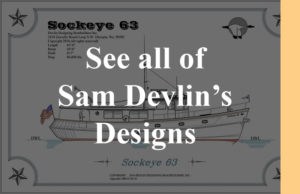
Notice to our valued Devlin Boat customers
As always, if you have any questions about orders (past or present), don’t hesitate to get in touch!

Featured Products

Artfully Designed and Crafted Boats since 1978
Shop tours on Fridays by appointment
Pin It on Pinterest
- BOAT OF THE YEAR
- Newsletters
- Sailboat Reviews
- Boating Safety
- Sails and Rigging
- Maintenance
- Sailing Totem
- Sailor & Galley
- Living Aboard
- Destinations
- Gear & Electronics
- Charter Resources
- Ultimate Boat Giveaway

40 Best Sailboats
- By Cruising World Editors
- Updated: May 24, 2024
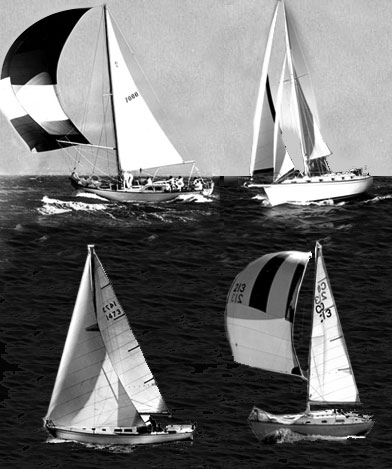
Sailors are certainly passionate about their boats, and if you doubt that bold statement, try posting an article dubbed “ 40 Best Sailboats ” and see what happens.
Barely had the list gone live, when one reader responded, “Where do I begin? So many glaring omissions!” Like scores of others, he listed a number of sailboats and brands that we were too stupid to think of, but unlike some, he did sign off on a somewhat upbeat note: “If it weren’t for the presence of the Bermuda 40 in Cruising World’s list, I wouldn’t even have bothered to vote.”
By vote, he means that he, like hundreds of other readers, took the time to click through to an accompanying page where we asked you to help us reshuffle our alphabetical listing of noteworthy production sailboats so that we could rank them instead by popularity. So we ask you to keep in mind that this list of the best sailboats was created by our readers.
The quest to building this list all began with such a simple question, one that’s probably been posed at one time or another in any bar where sailors meet to raise a glass or two: If you had to pick, what’re the best sailboats ever built?
In no time, a dozen or more from a variety of sailboat manufacturers were on the table and the debate was on. And so, having fun with it, we decided to put the same question to a handful of CW ‘s friends: writers and sailors and designers and builders whose opinions we value. Their favorites poured in and soon an inkling of a list began to take shape. To corral things a bit and avoid going all the way back to Joshua Slocum and his venerable Spray —Hell, to Noah and his infamous Ark —we decided to focus our concentration on production monohull sailboats, which literally opened up the sport to anyone who wanted to get out on the water. And since CW is on the verge or turning 40, we decided that would be a nice round number at which to draw the line and usher in our coming ruby anniversary.
If you enjoy scrolling through this list, which includes all types of sailboats, then perhaps you would also be interested in browsing our list of the Best Cruising Sailboats . Check it out and, of course, feel free to add your favorite boat, too. Here at Cruising World , we like nothing better than talking about boats, and it turns out, so do you.
– LEARN THE NAVIGATION RULES – Know the “Rules of the Road” that govern all boat traffic. Be courteous and never assume other boaters can see you. Safety Tip Provided by the U.S. Coast Guard
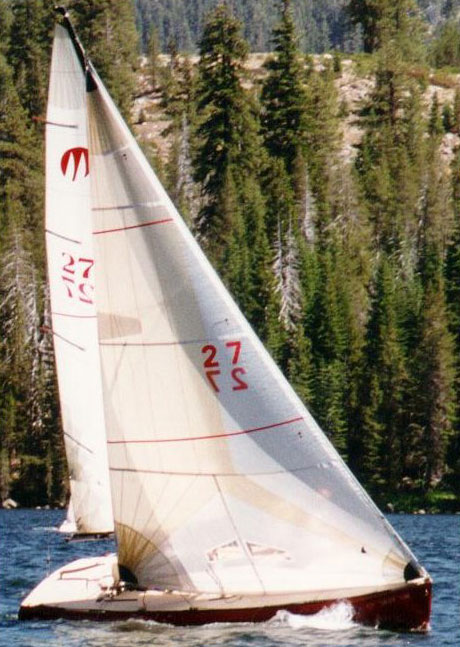
40. Moore 24
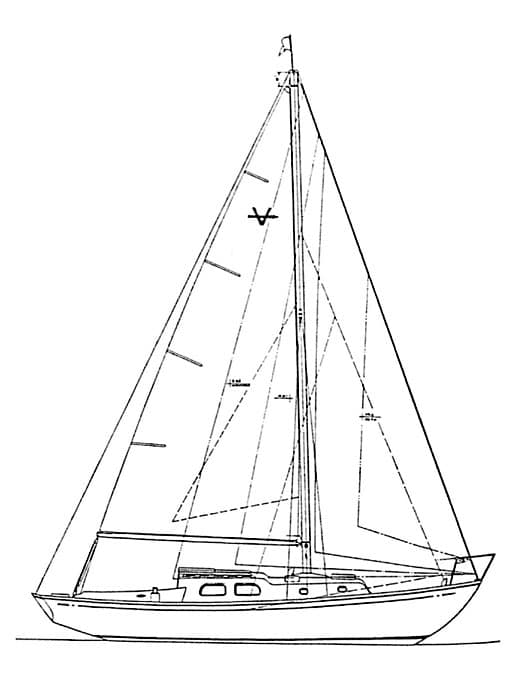
39. Pearson Vanguard
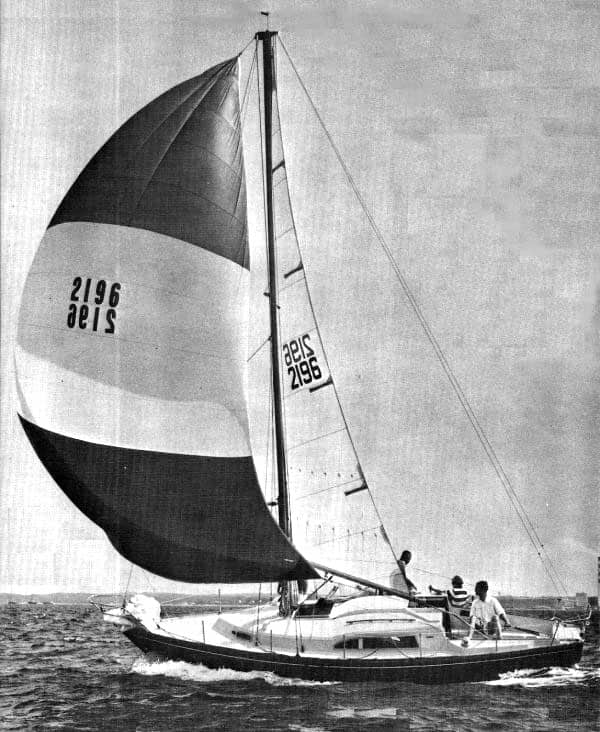
38. Dufour Arpege 30
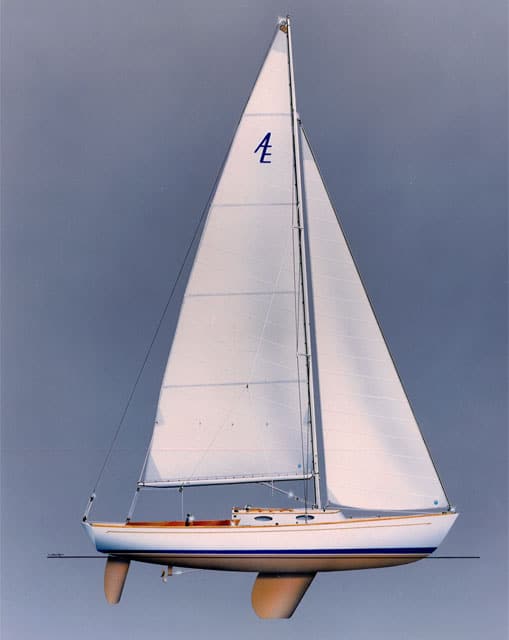
37. Alerion Express 28
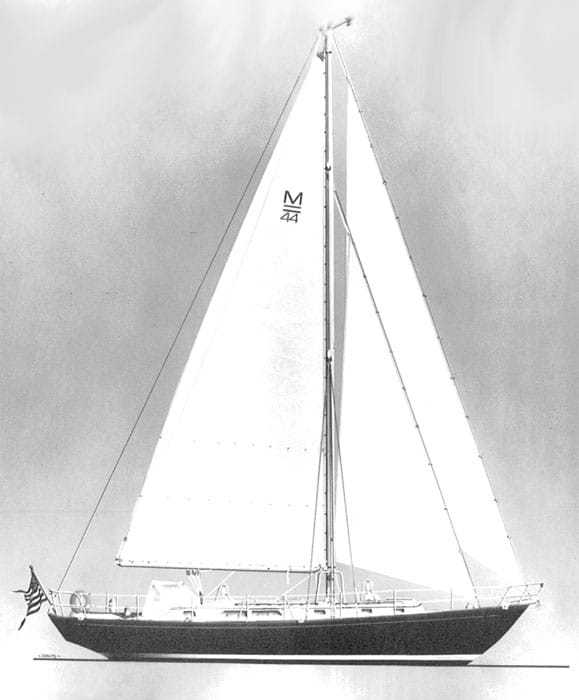
36. Mason 43/44
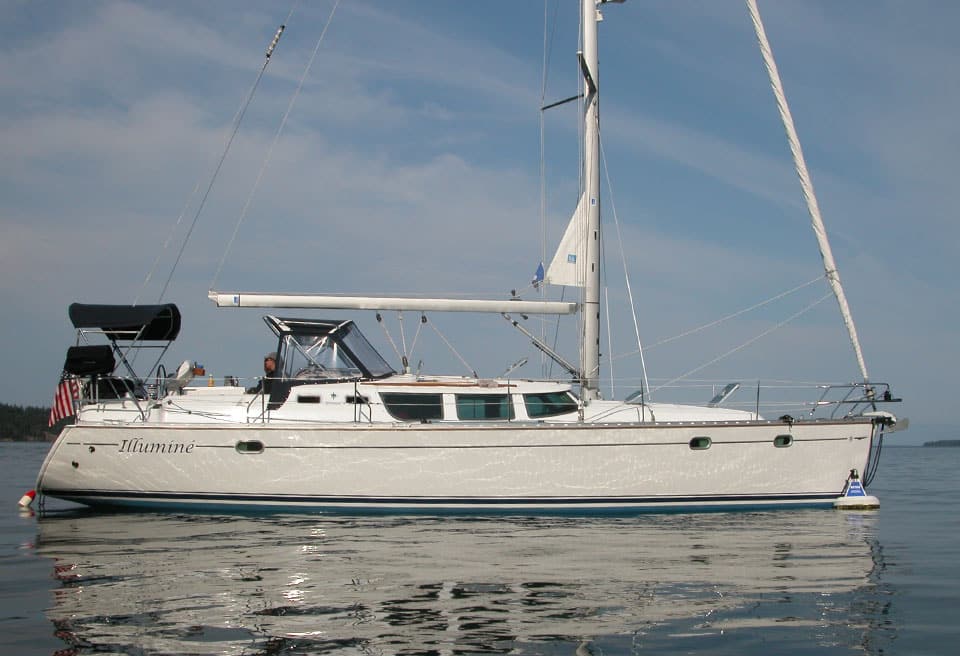
35. Jeanneau Sun Odyssey 43DS
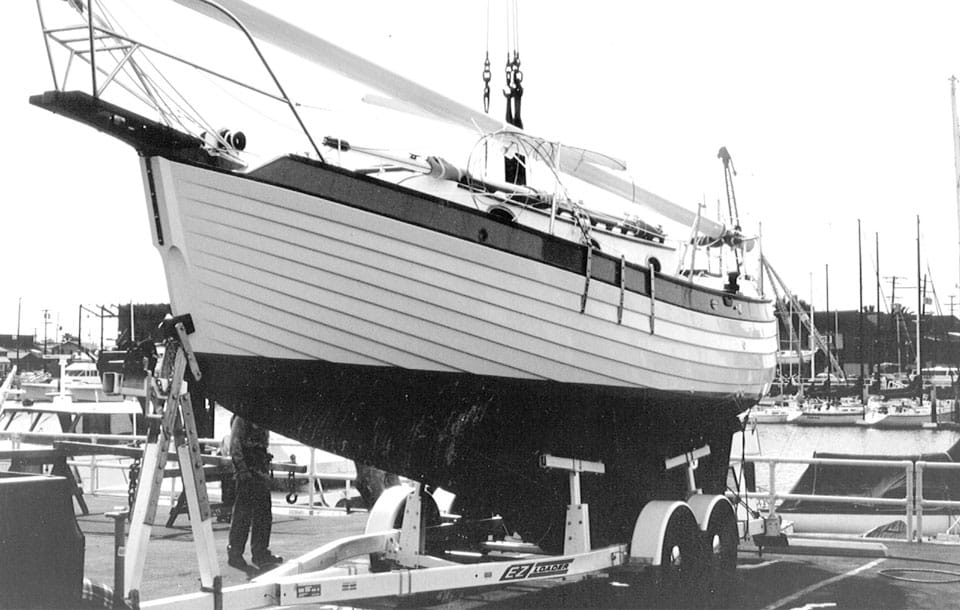
34. Nor’Sea 27
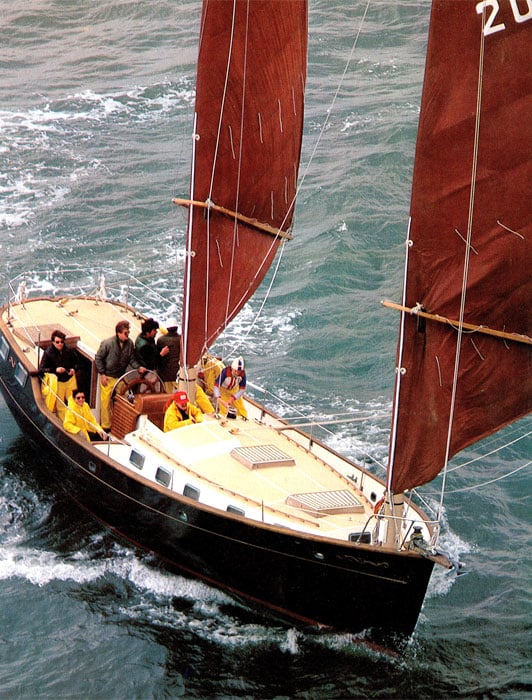
33. Freedom 40
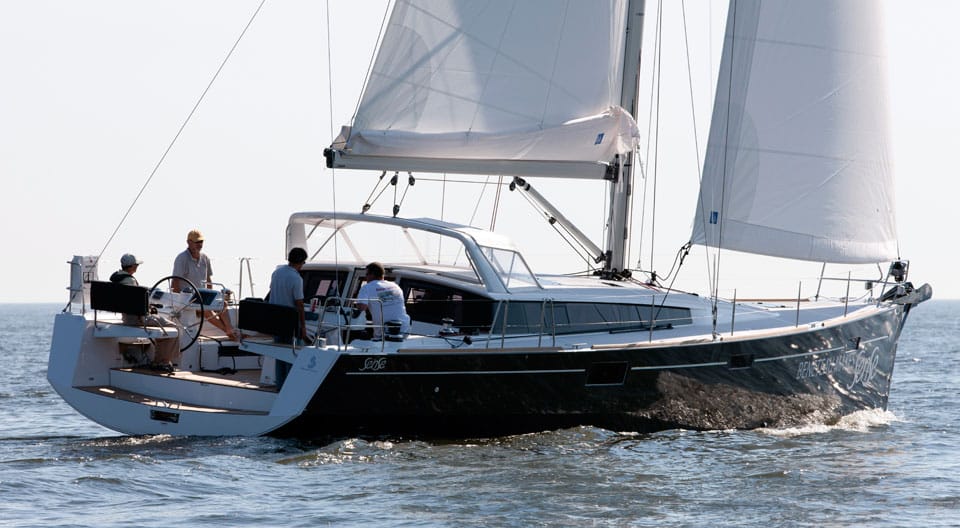
32. Beneteau Sense 50
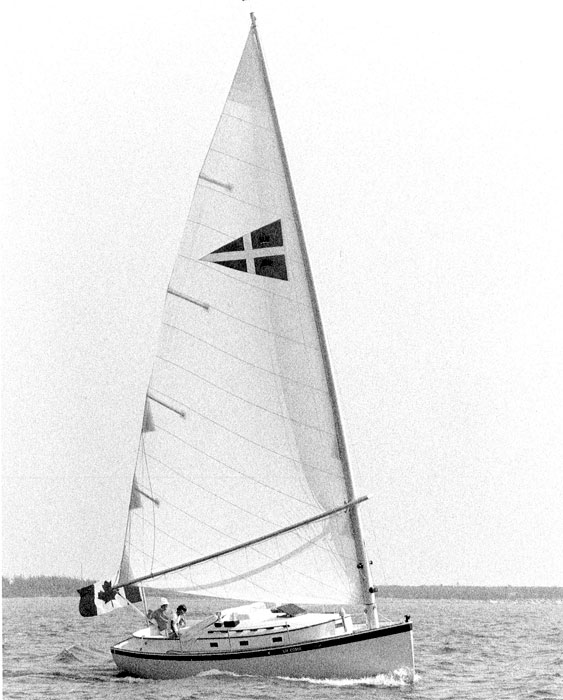
31. Nonsuch 30
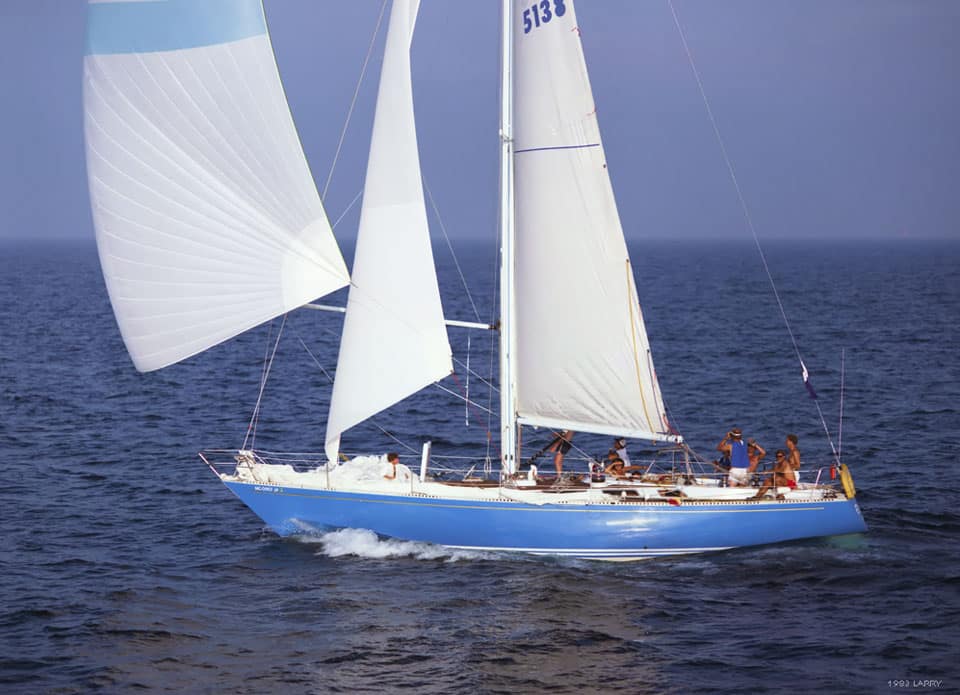
30. Swan 44
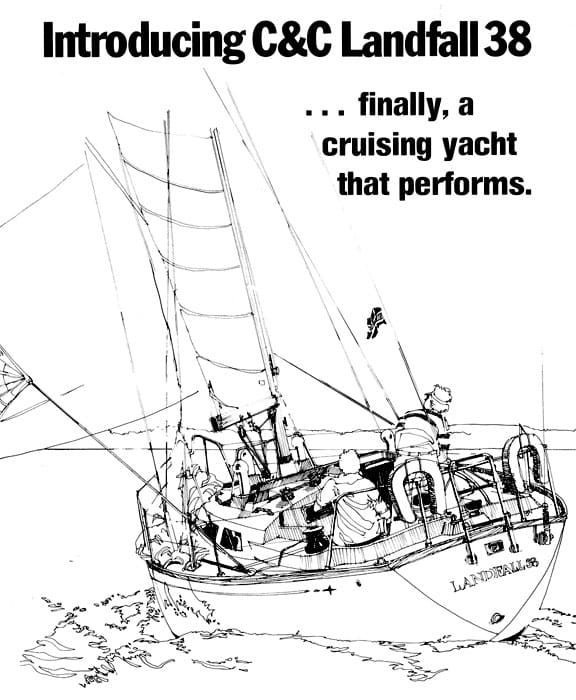
29. C&C Landfall 38
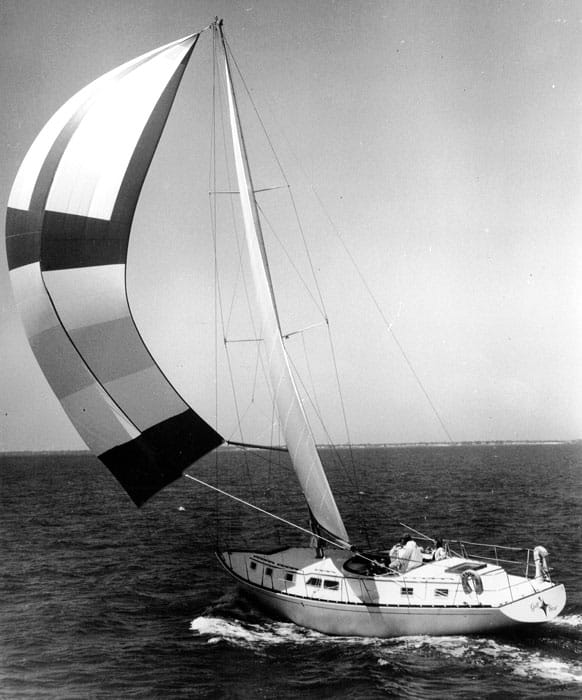
28. Gulfstar 50
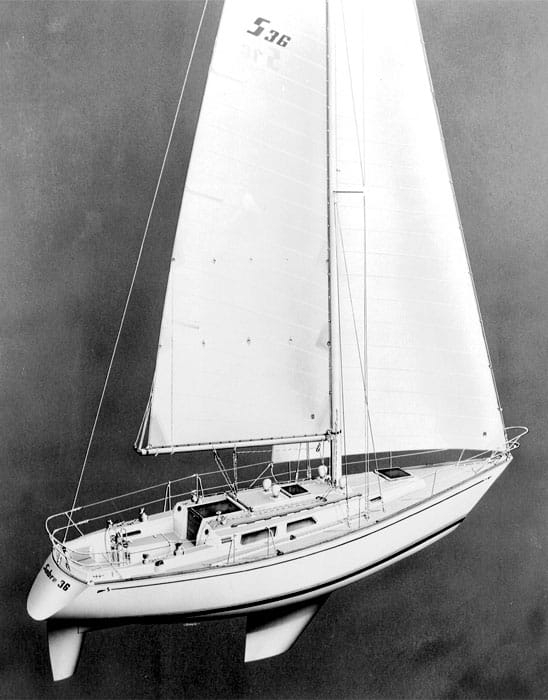
27. Sabre 36
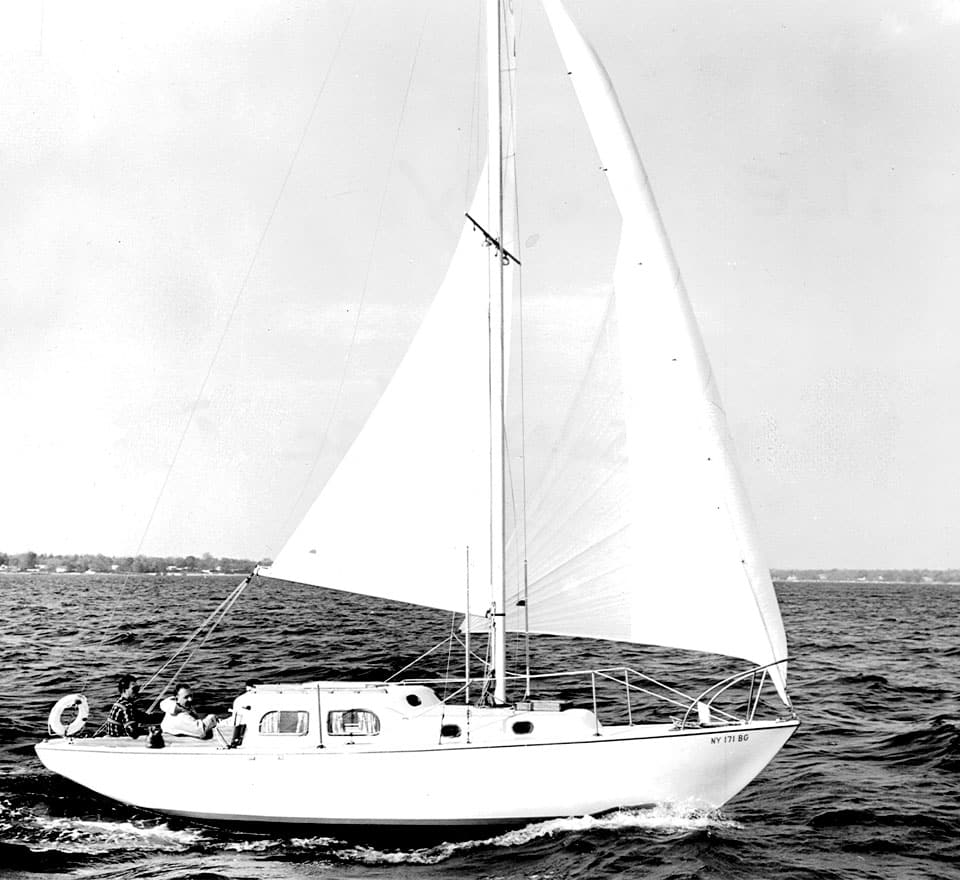
26. Pearson Triton
– CHECK THE FIT – Follow these guidelines to make sure your life jacket looks good, stays comfortable and works when you need it. Safety Tip Provided by the U.S. Coast Guard
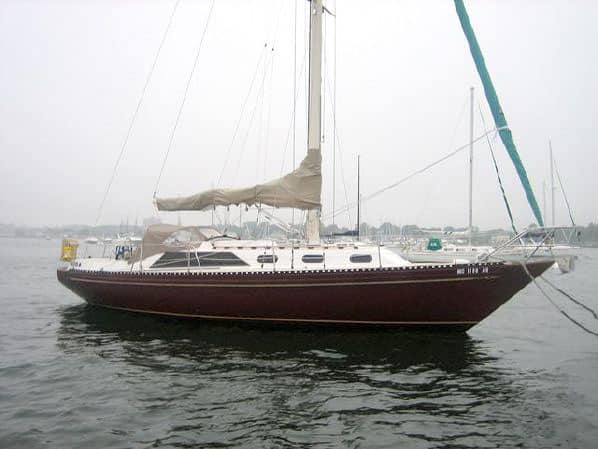
25. Islander 36
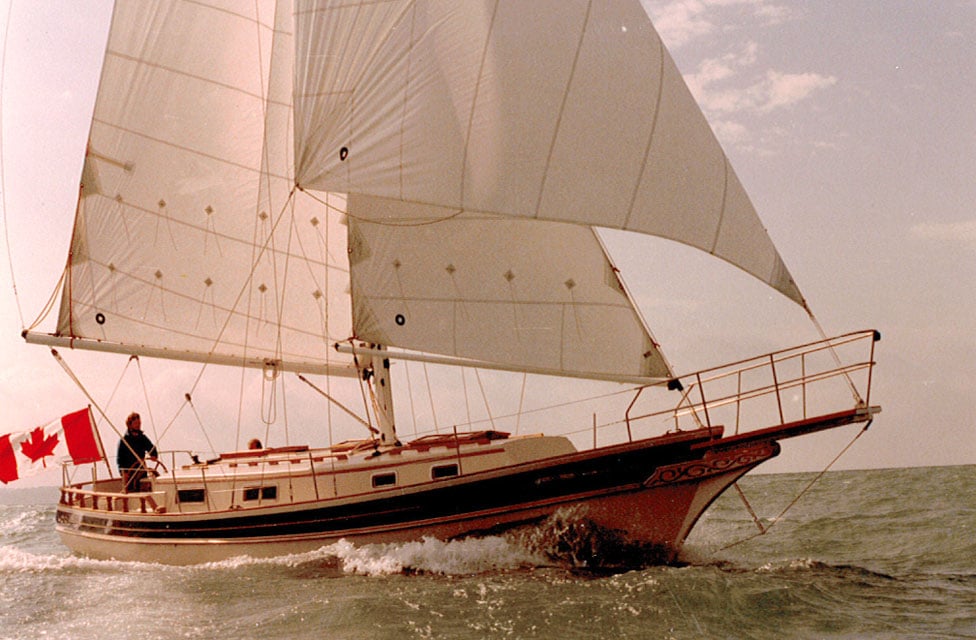
24. Gozzard 36
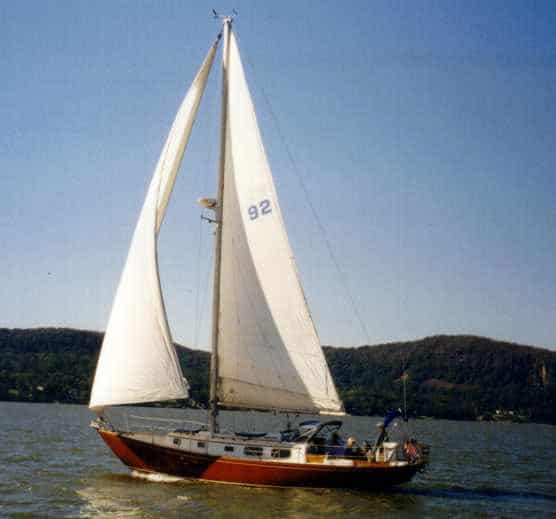
23. Bristol 40
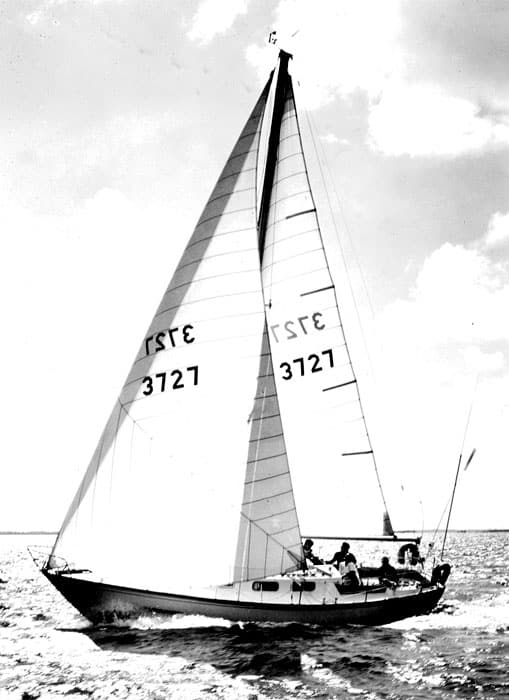
22. Tartan 34
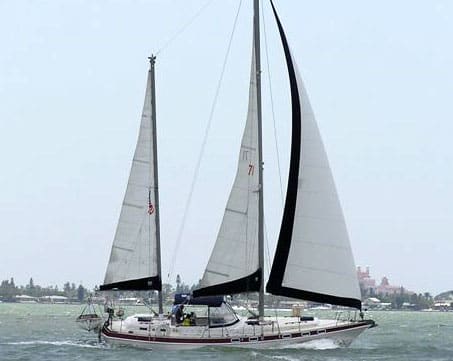
21. Morgan Out Island 41
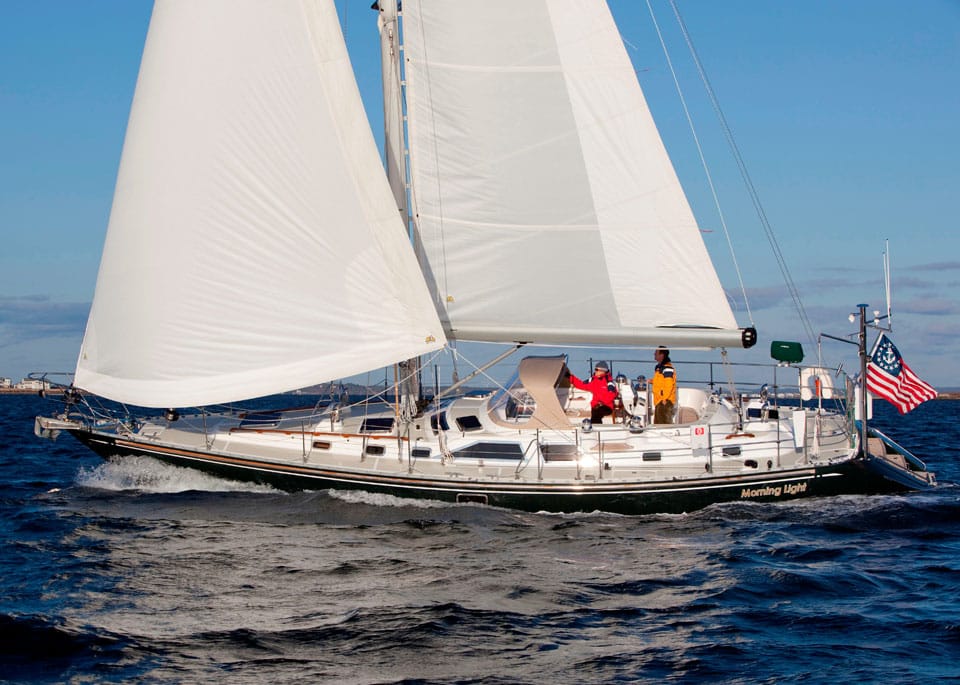
20. Hylas 49
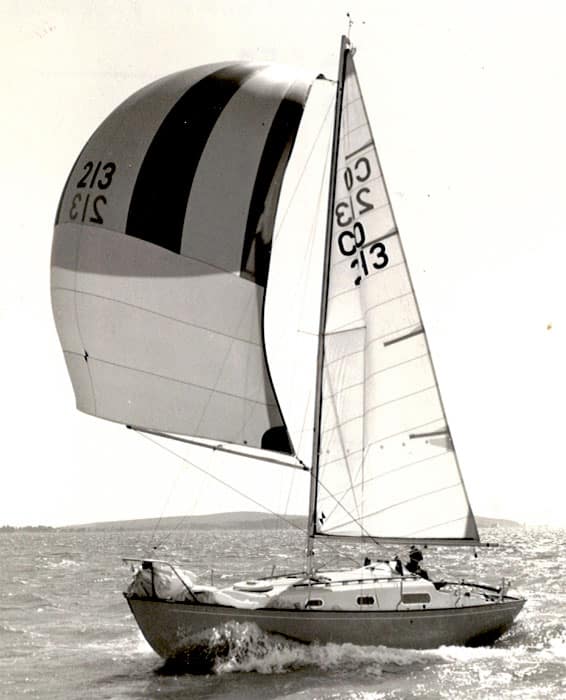
19. Contessa 26
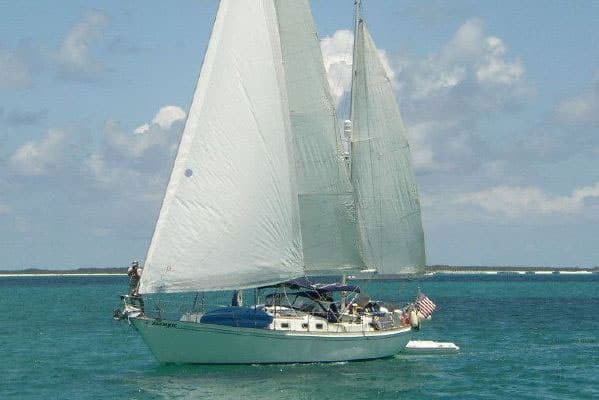
18. Whitby 42
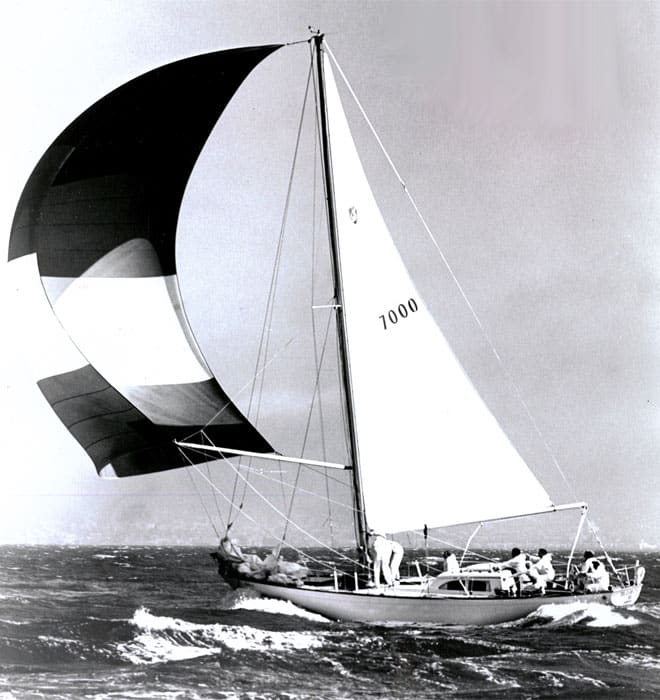
17. Columbia 50
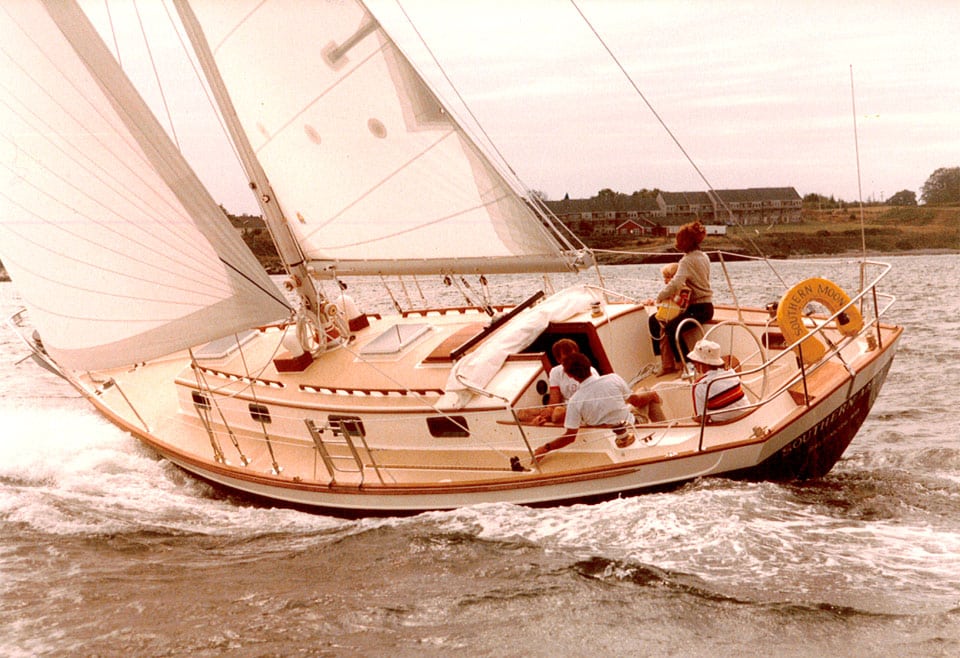
16. Morris 36
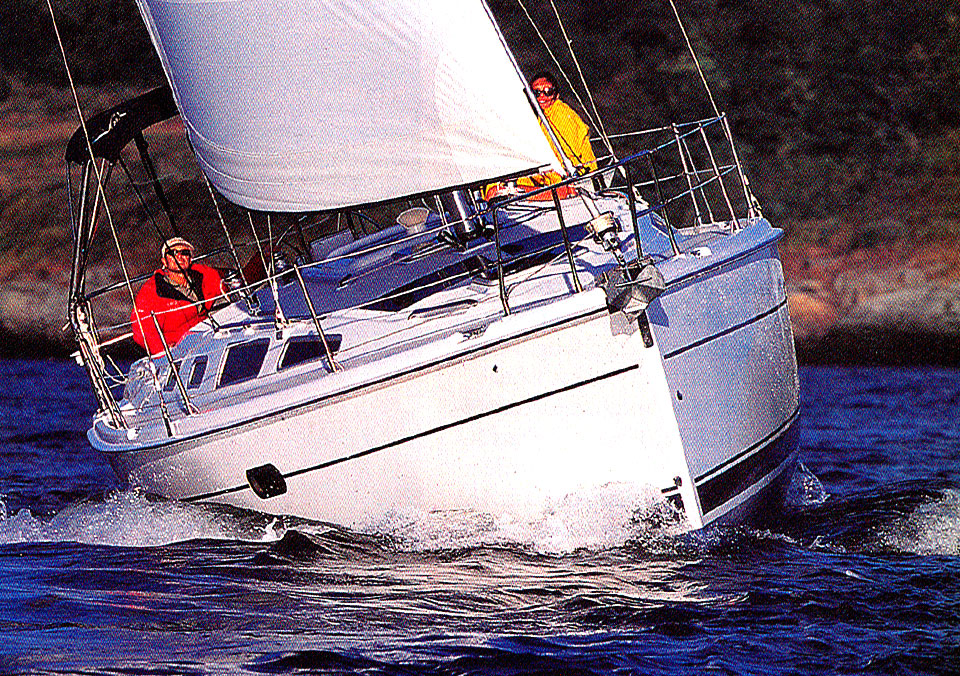
15. Hunter 356
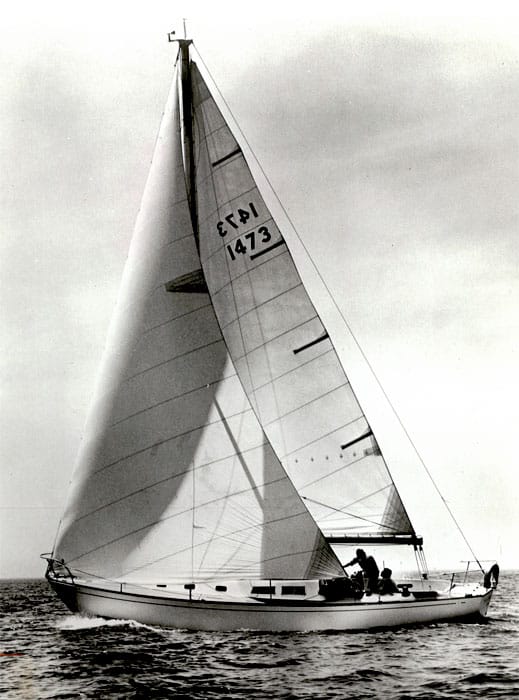
13. Beneteau 423
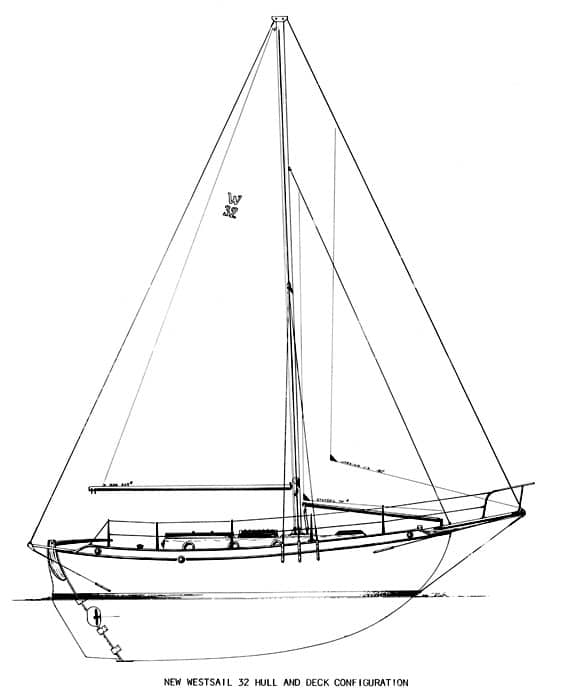
12. Westsail 32
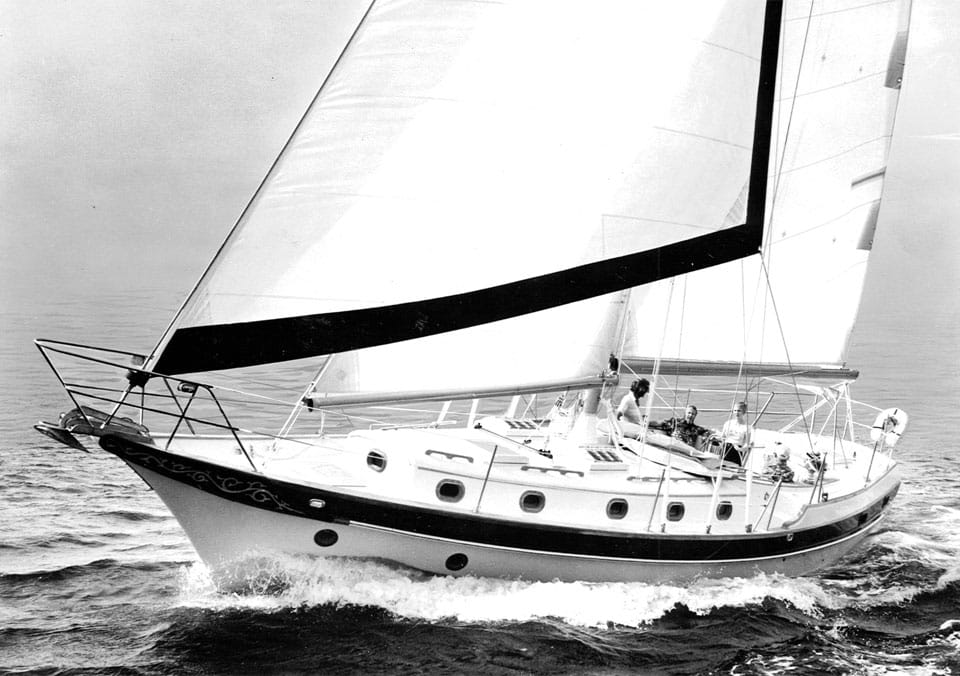
– CHECK THE WEATHER – The weather changes all the time. Always check the forecast and prepare for the worst case. Safety Tip Provided by the U.S. Coast Guard
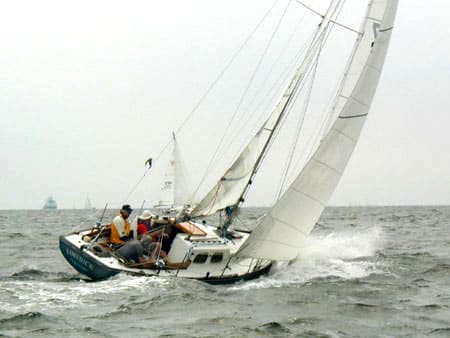
10. Alberg 30
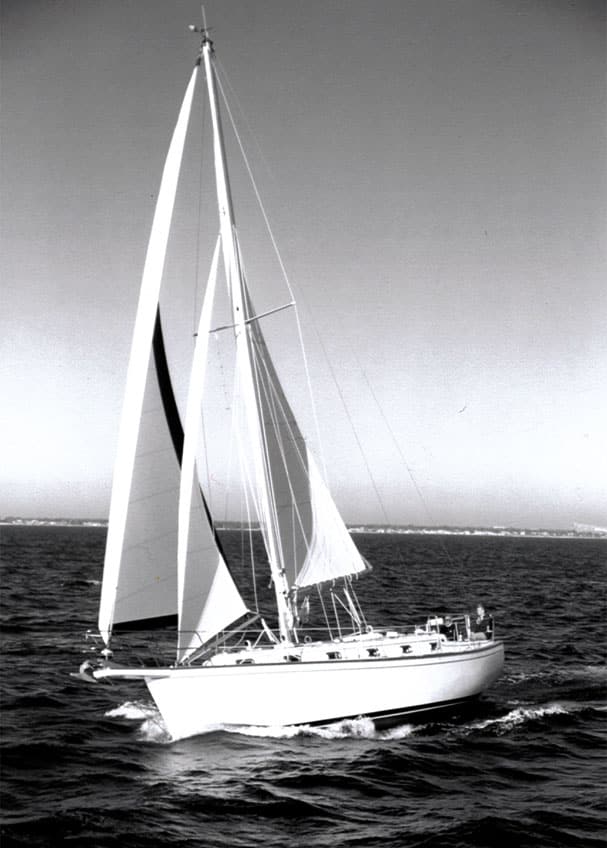
9. Island Packet 38
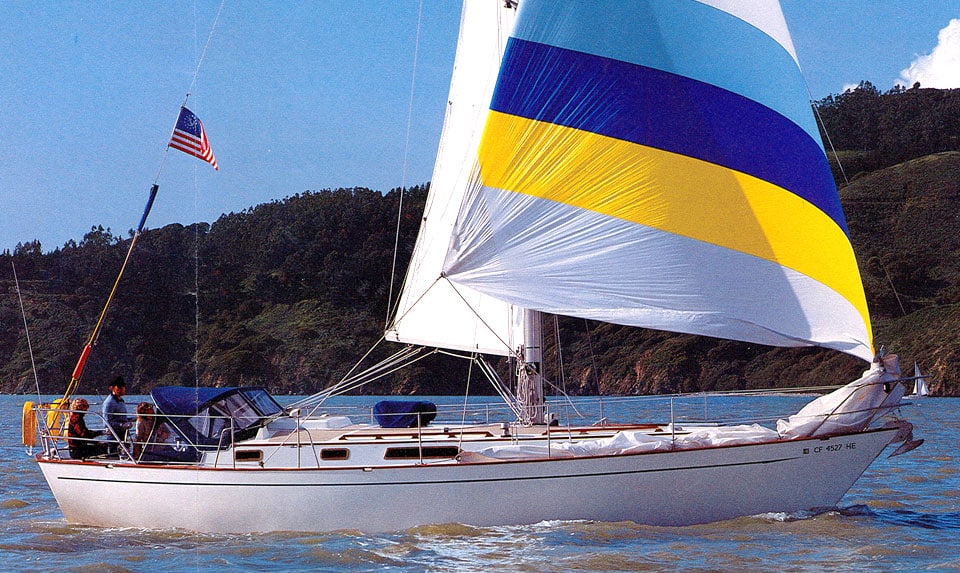
8. Passport 40
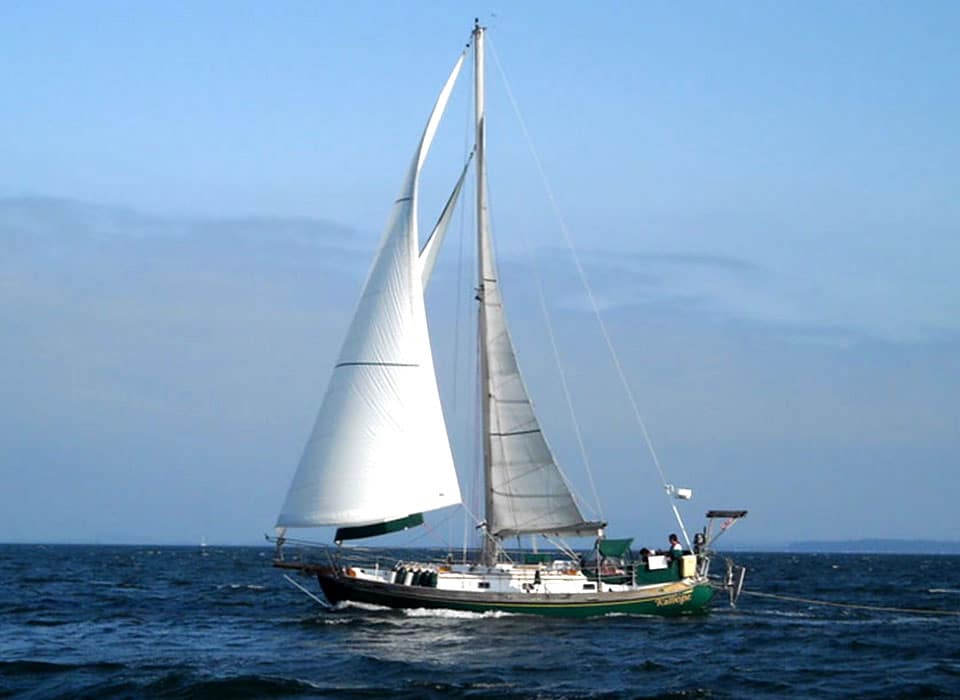
7. Tayana 37
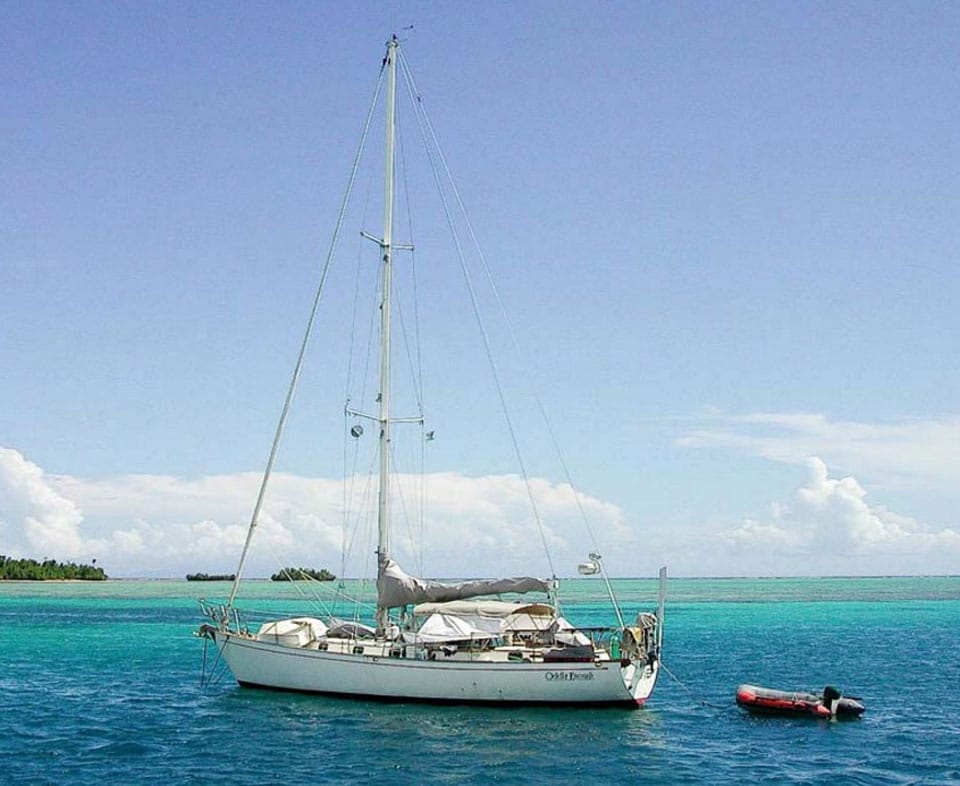
6. Peterson 44
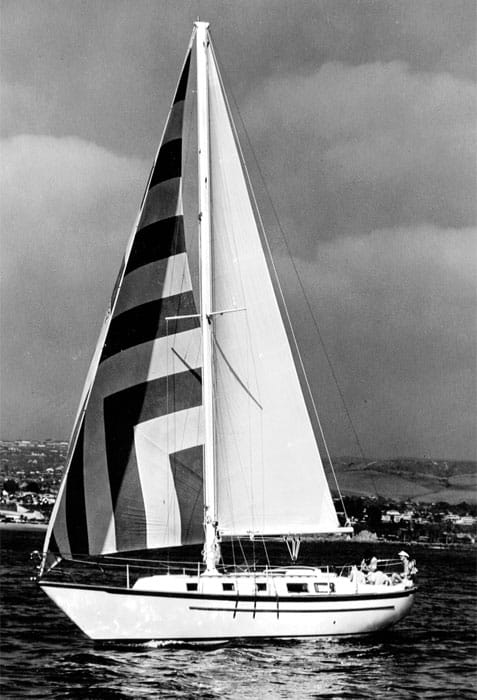
5. Pacific Seacraft 37
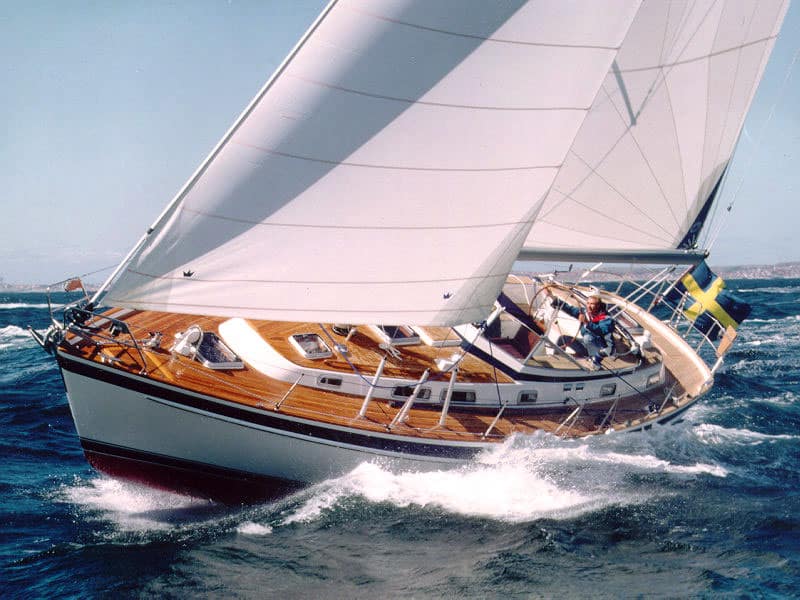
4. Hallberg-Rassy 42
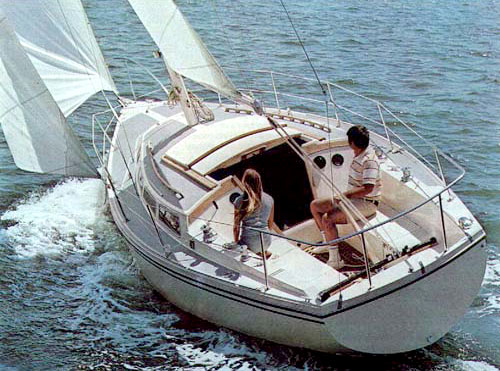
3. Catalina 30
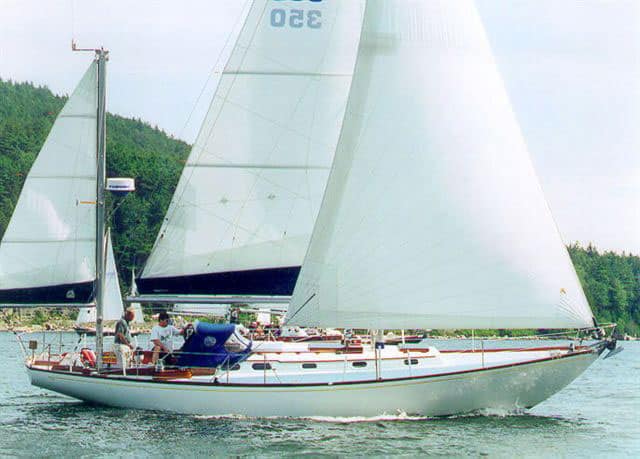
2. Hinckley Bermuda 40
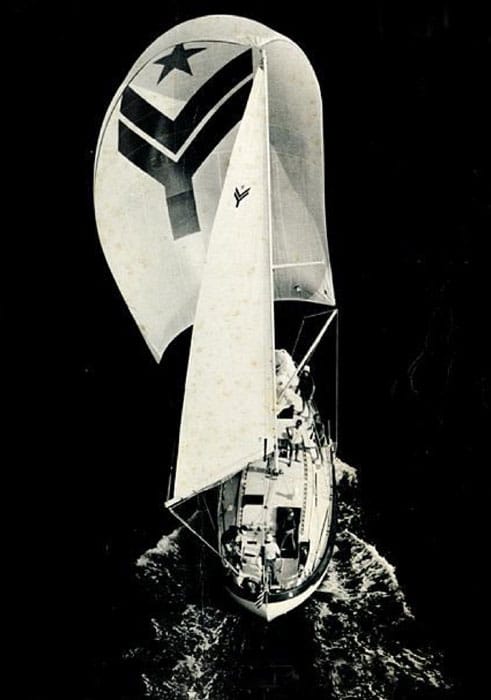
1. Valiant 40
- More: monohull , Sailboats
- More Sailboats

Sailboat Preview: Elan GT6 Explorer

For Sale: 1984 Camper & Nicholsons 58

Alubat Updates OVNI Models

For Sale: Little Harbor 63 Ketch
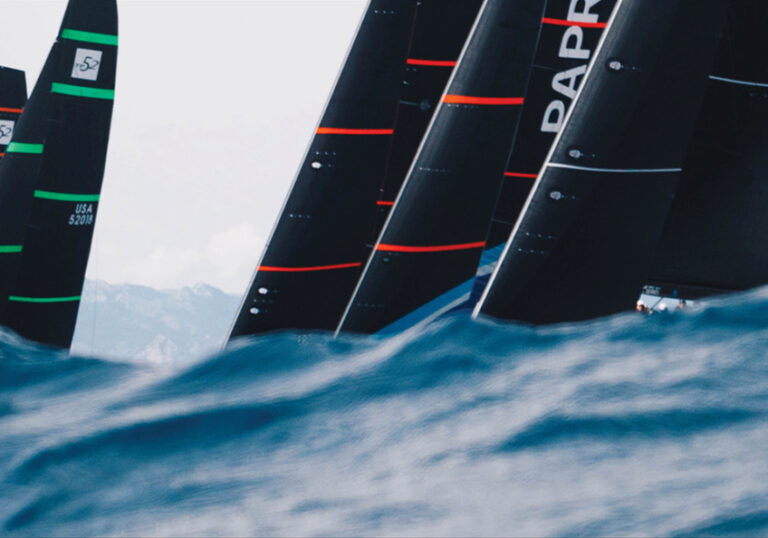
North Sails Parent Company Buys Doyle, Quantum
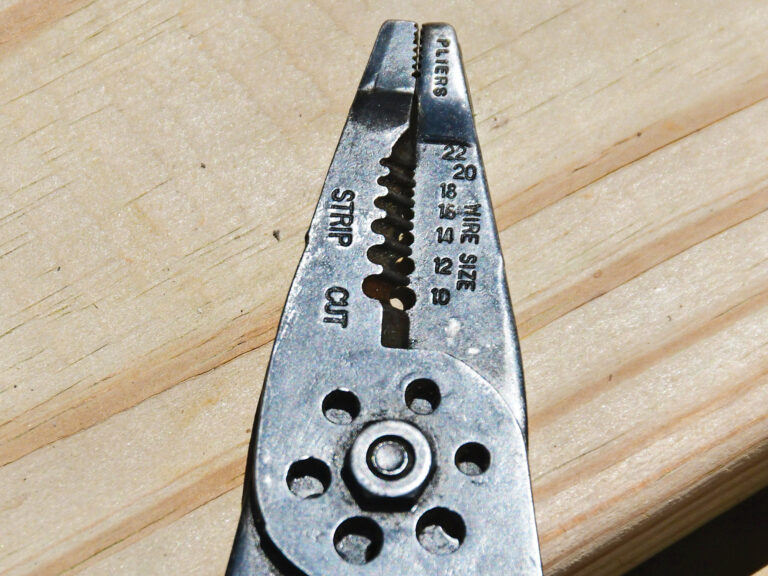
Top Tools for Sailboat Cruising: Must-Have Gear for 2024
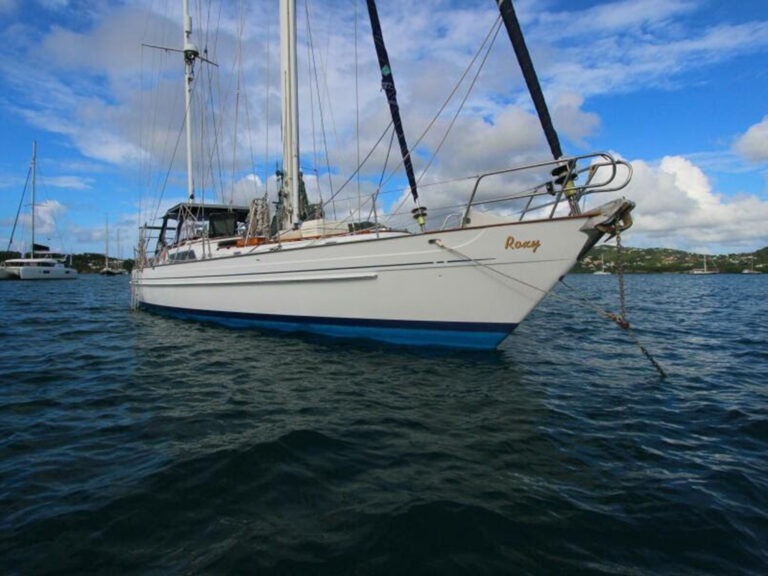
Sailing Avocet : A New Adventure Begins
- Digital Edition
- Customer Service
- Privacy Policy
- Terms of Use
- Email Newsletters
- Cruising World
- Sailing World
- Salt Water Sportsman
- Sport Fishing
- Wakeboarding
Visit our Popular Forums
- Monohull Sailboats
- Multihull Sailboats
- Powered Boats
- General Sailing
- Antares Yachts
- Fountaine Pajot
- Lagoon Catamarans
Cruising Business
- Boat Classifieds
- General Classifieds
- Crew Positions
- Commercial Posts
- Vendor Spotlight
Life Aboard a Boat
- Provisioning: Food & Drink
- Families, Kids, & Pets Afloat
- Recreation, Entertainment, & Fun
- Boat Ownership & Making a Living
- Liveaboard's Forum
Seamanship, Navigation & Boat Handling
- Seamanship & Boat Handling
- Training, Licensing, & Certification
- Health, Safety, & Related Gear
- Rules of the Road, Regulations, & Red Tape
Engineering & Systems
- Const. / Maint. / Refit
- Product / Service Reviews
- Electronics: Comms / AV
- Electrical: Batts / Gen / Solar
- Lithium Power Systems
- Engines & Propulsion
- Propellers & Drive Systems
- Plumbing / Fixtures
- Deck Hdw: Rigging / Sails
- Aux. Equipment & Dinghy
- Anchoring & Mooring
Photo Categories
- Member Galleries
- Life Onboard
- Sailing in the Wind
- Power Boats
- Cruising Destinations
- Maint. & Boat Building
- Marine Life
- Scuba Diving & Divers
- General Photos
Recent Photos

Listing Categories
- African Cats
- view more »
- Crew Wanted
- Crew Available
- Enhance Your Account
- Meet the Mods
- Meet the Advisors
- Signup for The Daily Cruiser Email















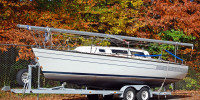



IMAGES
COMMENTS
Here are 13 good full keel sailboats that are worth considering: Nicholson 32. Island Packet 380. Folkboat 25. Cape Dory 36. Vancouver 32. Freya 39. Wylo 2. Tradewind 33.
That full keel stops a lot of roll and motion in the anchorage. Small fin-keeled boats thrash and roll violently when a big wake hits an anchorage, only the bigger, heavier boats are spared. But with a full keel you'll roll like a boat twice your size, spill a lot fewer drinks, and sleep better. 5. Less Draft as Other Designs (but As Stable)
The full keel is the oldest style of keel, used since the earliest sailboats. A full keel is integral to the hull and runs the entire length of the under-body of the boat. The rudder is hung at the end of the keel if it's not transom mounted. Most "full keel" boats from recent decades are modifications of the centuries-old full keel.
Full Keel Sailboats. Although full keels are by far the least efficient design, they offer incredible strength and versatility. If we want to explore new waters in which we could run aground, or travel offshore, a complete keel will keep our backs better than any other. One thing is certain though, a full keel will never fall off your boat as a ...
Learn about five different models of cutter-rigged or sloop-rigged sailboats that have full keels and are suitable for long-distance cruising. Compare their features, prices, tankage, and design characteristics.
MODERN ARGUMENT IN FAVOR OF FULL KEEL BLUEWATER SAILBOATS: Aesthetics, robustness of structure, and bullet-proof reputation are the characteristics of the full keel design that molded my confidence to build/own one as a young naval architect drawing boats between the age of 12 to 23 before actually purchasing a Cape George 31 bare hull in 1991 ...
How I became a Full-Keel Convert-Part One. Posted on April 10, 2013 by Barry. A line drawing of Sirocco, a true full-keel boat. Sirocco is a "Ben Bow" designed by William Atkin. Over the years that I have been sailing, I have logged miles on a number of different craft from an International Sabot up to a steel schooner of about 200 gross ...
Keel bolts and the infamous garboard seam are completely eliminated. This approach to sailboat keel design dates back to the Rhodes Bounty II and other prototypes in the production world of sailboats. Now over 50 years old, many of these boats continue to have a tenacious grasp on the lead or iron that they hold.
The Frances 26 is a 1980s Chuck Paine designed double-ender. This eye-catching small double-ender was designed by Californian Chuck Paine in the mid-1980s but built in the UK by Victoria Marine. It's an ideal short-handed boat, with accommodation to match, along with sufficient displacement to give the solid feel that many long-keel ...
The full keel is one of the most common types of the keel that you are likely to see on a sailboat. A full keel runs from end to end of the boat lengthways. A full keel, as the name implies, runs almost the entire length of the boat. At a minimum, it must run 50% of the length of the boat.
Full keeled sailboats. A full keel is one that runs pretty much the whole length of the sailboat. This is one of the most stable types of keel, and is popular with offshore cruisers looking for a solid, rugged sailboat. A full keeled sailboat will usually fare better in heavy weather. They tend to track better in big waves and there is less ...
Devlin Boats, Sailboats. The Lit'l Coot 18 Full Keel is a is seaworthy and capable motorsailor with enough space on board for the organized sailor and enough potential to keep serious travelers satisfied. She is the sister to the original Lit'l Coot with the same hull and the same tendency for balanced performance and maximal use of space ...
With its full keel, round stern, lapstrake fiberglass hull, solid bulwarks and extended anchor roller and bow pulpit, the Nor'Sea 27 is a salty looking classic. ... is a fine example of a late '70s-early '80s moderate displacement, long fin keel, center cockpit sailboat, with roomy accommodations below and good sailing performance in any ...
A very traditional boat, a full keel, gaff rigged cutter with tan bark sails, that has many ocean miles under her keel. Ruth Avery is a Southern Cross 31, for the record . Designed by Gillmer, as you say.
Lastly, full keel sailboats are less likely to be damaged when grounding, as the keel's large surface area allows for better weight distribution. This characteristic can be especially useful when navigating shallow waters or exploring uncharted territories. Cons of full keel. Despite the many advantages of a full keel, it also has some drawbacks.
November 15, 2016. A full keel sailboat is not known for high speed or performance, they are known for being sturdy. The full keel provides a lot of wetted surface area which leads to more drag through the water and slower speed. The low aspect ratio appendage extends out below the hull and provides little lift for its size which translates ...
Equipped with a full-roach, laminated Mylar mainsail, and a roller-furling jib, this sailboat is tailored for superior sailing efficiency in light winds, with an optional deep lead keel for added stability and speed. An added bow thruster makes docking on the windiest days less stressful.
It is quicker than most full keel boats.The long-keel design ensures a comfortable ride at sea, and the center cockpit layout allows for an extremely roomy and useful live aboard arrangement for cruising. Soon more pictures and specs... 1986 Canyon Industries 43 Sloop - Refurbished 2014. $150,000 ...
Find Formosa Full Keel Sloop boats for sale in your area & across the world on YachtWorld. Offering the best selection of Formosa boats to choose from. ... 1987 Formosa Full Keel Sloop. US$139,000. ↓ Price Drop. Denison Yachting | Marathon, Florida. Request Info; Sponsored Boats | related to your search. 2025 Jasper Marine Defender 22. US ...
Most of the inventory seems to be 70s-90s sailboats. Island Packets have a full keel with a cutaway forefoot, I don't know if you'd count that. They're sailed all around the world and the company really prides themselves on their keel design. They still build folkboats to the original specifications. Full keel and all.
We chose a Tayana 37 for our small cruising sailboat, which features a fairly deep full keel, a super thick fiberglass hull, a moderately heavy displacement, two good sea berths and a small, sea-going cockpit. The best 5 small bluewater sailboats for sailing around the world
A keel is a weighted, fin-like part of the boat that protrudes from its base and helps keep the boat stable. When the wind pushes the boat onto its side, the weight of the keel counteracts the ...
The most common sailboat keel types are full-length keels, fin keels, bulb keels, wing keels, bilge keels, and lifting keels. Full keels are popular among cruisers, while fin keels are generally used for racing. Bilge keels and lifting keels are typically used in tidal waters, on small fishing boats for example.
High-performance boats at Moomba are designed with a heavy-duty keel, low profile, and perfectly balanced to deliver high speed and stability. 5. Horsepower & Speed
According to the Associated Press, the boat has been available for charter for $215,000 (€195,000) per week. Lynch's wife is linked to the yacht. The Bayesian is held by the company Revtom ...
When divers searched the Bayesian 165ft underwater, it was reported that they found the vessel's retractable keel was partially raised, sparking questions about the boat's stability at the ...
A fire service boat with flashing blue lights returns with a blue body bag to the port of Porticello just after 8.45am local time on Thursday. Tributes pour in for Mr Lynch and Mr and Mrs Bloomer ...
Hunter 22. This one has to make the list because it is immensely popular. Rightfully so. It is small enough to be transported on a trailer, plus it has a lifting keel that makes the draft only 30 centimeters when up - but over a meter when down, so it still has to say a lot in terms of performance.
Standard procedure in such storms, he said, would be to switch on the engine, lift the anchor and turn the boat into the wind, lowering the keel for extra stability, closing doors and gathering ...